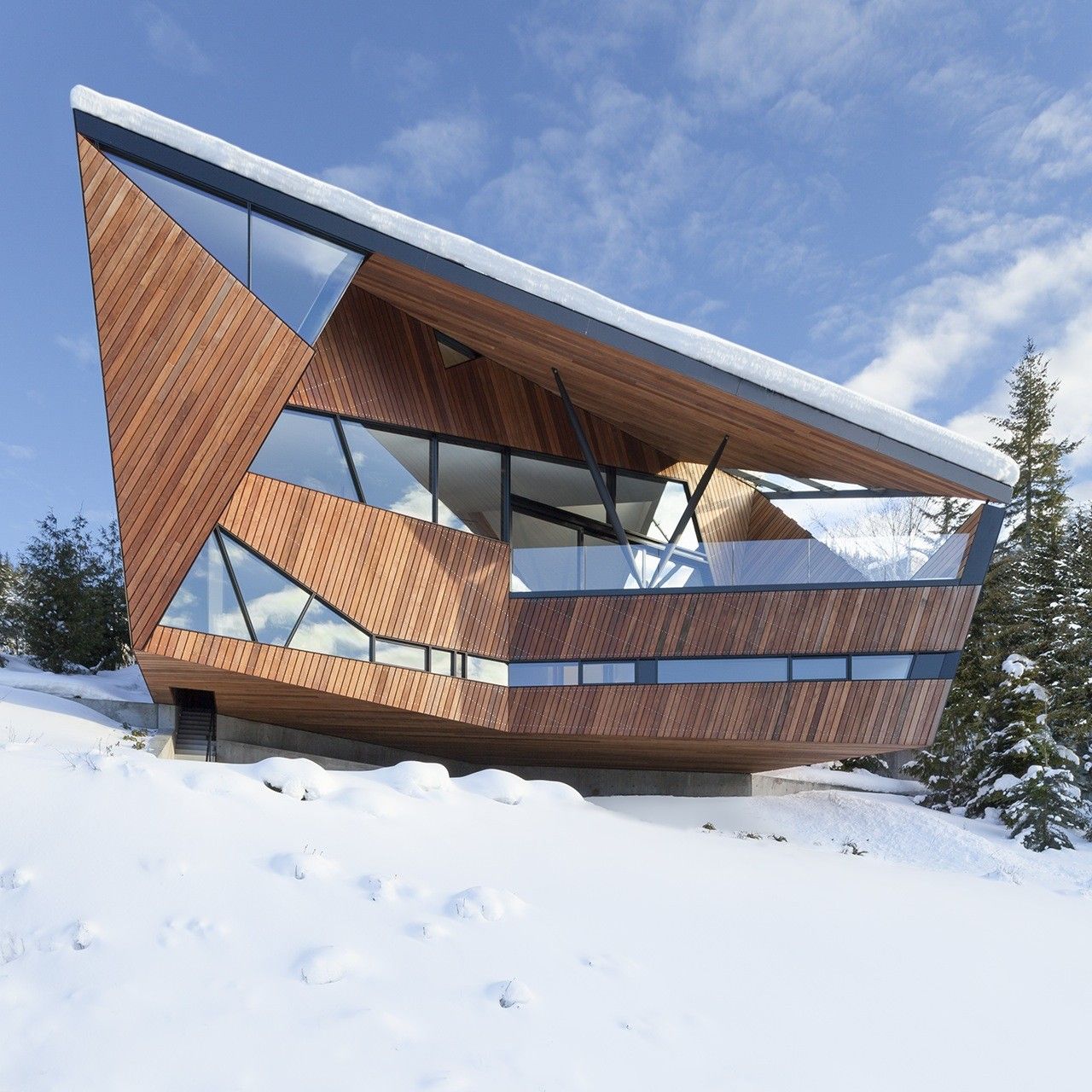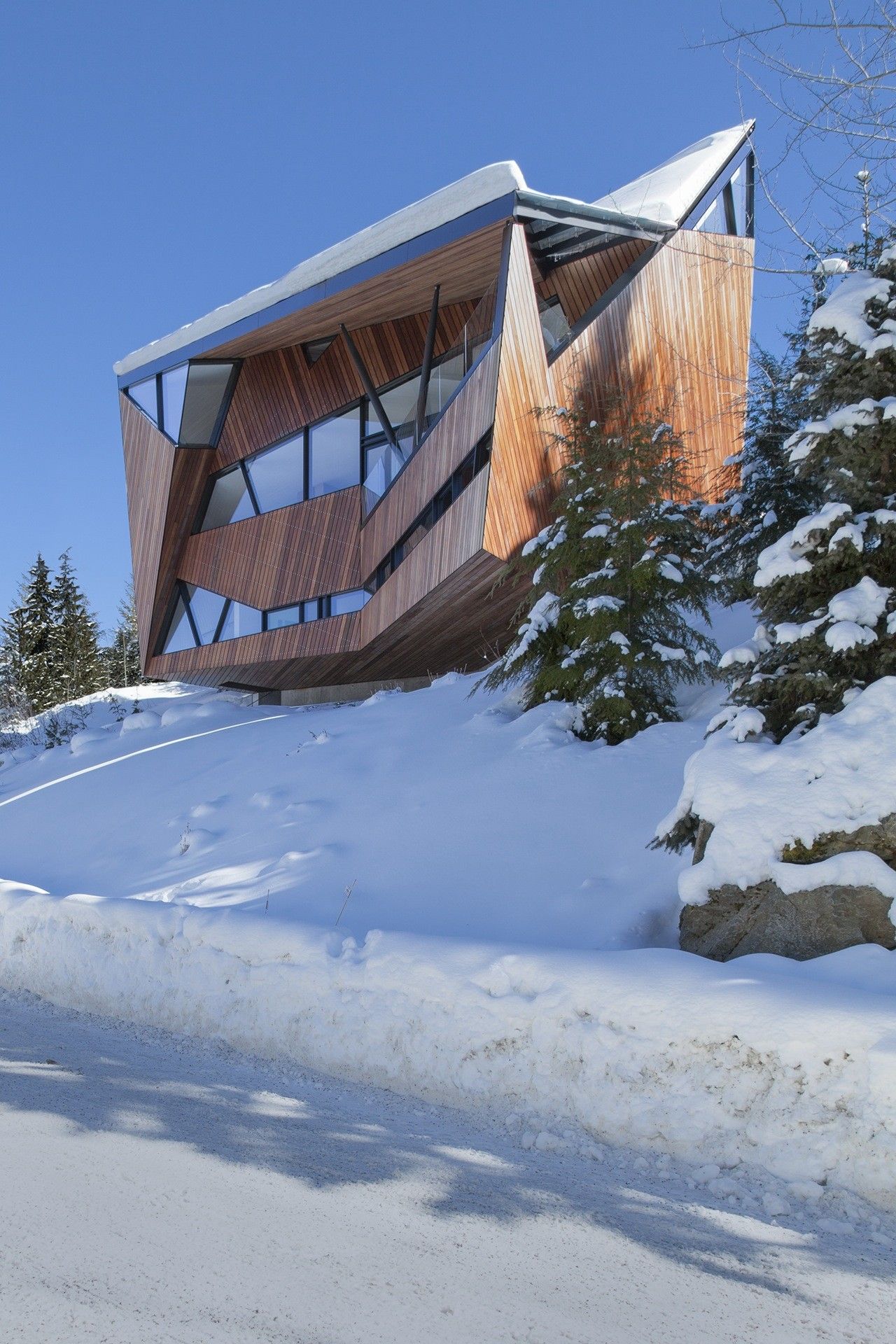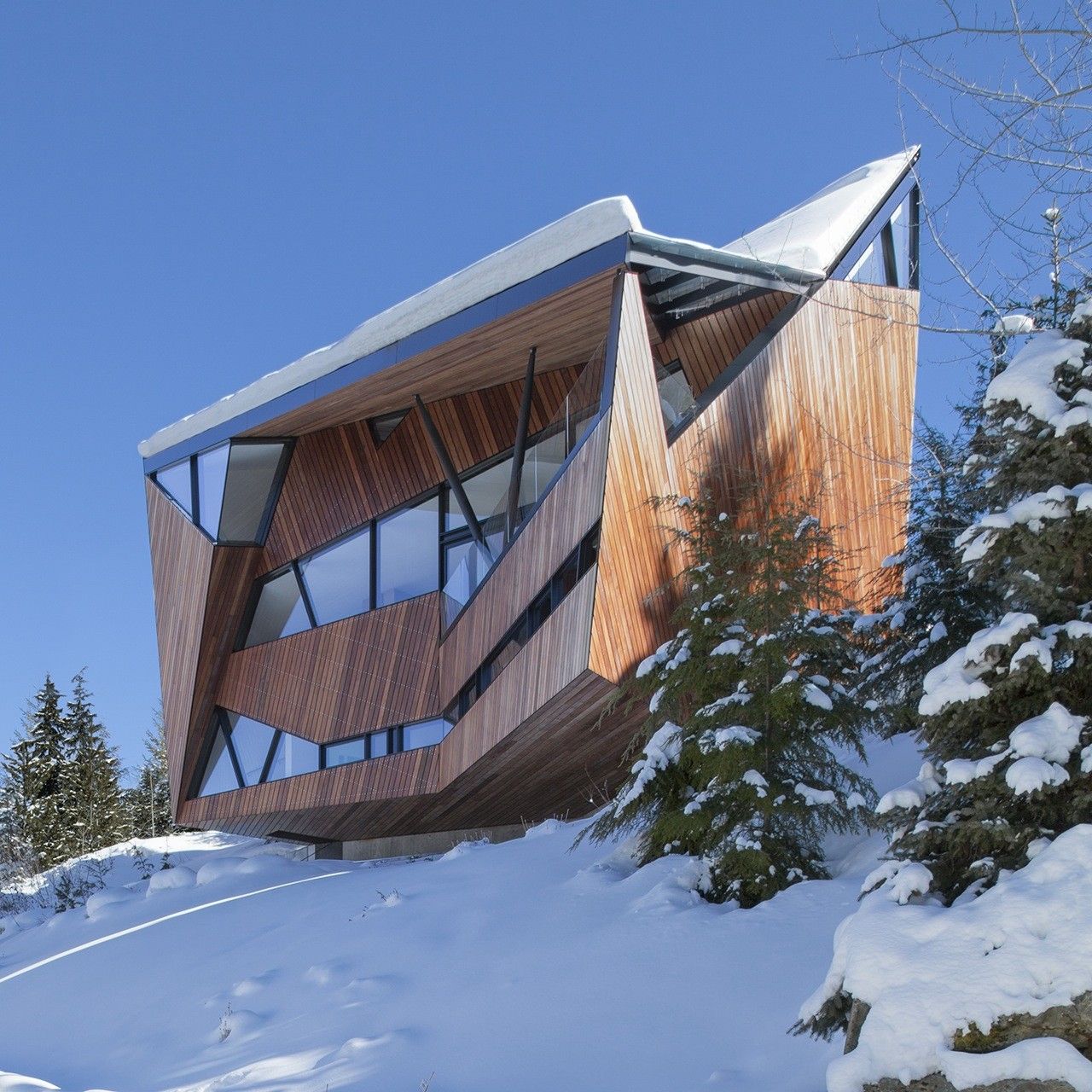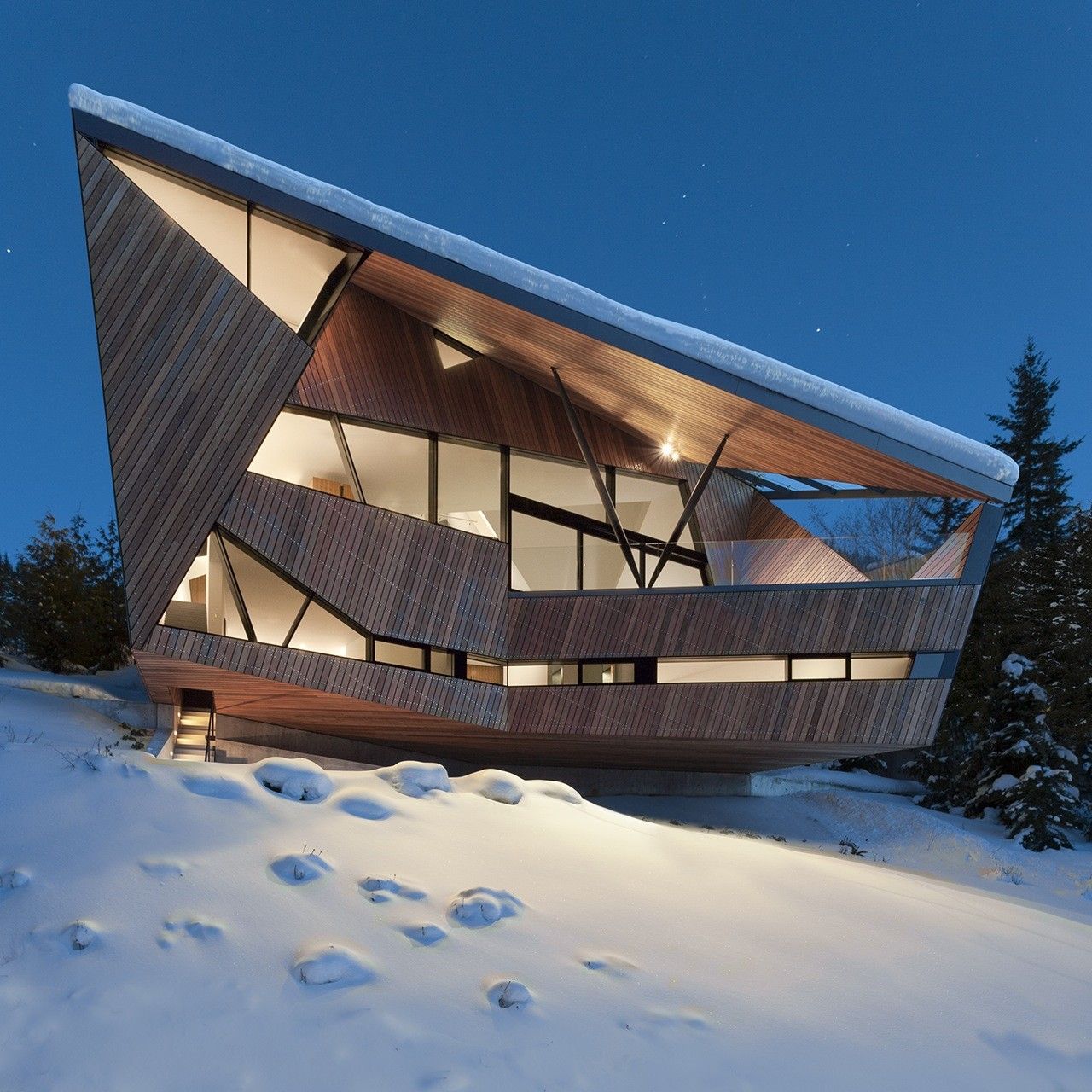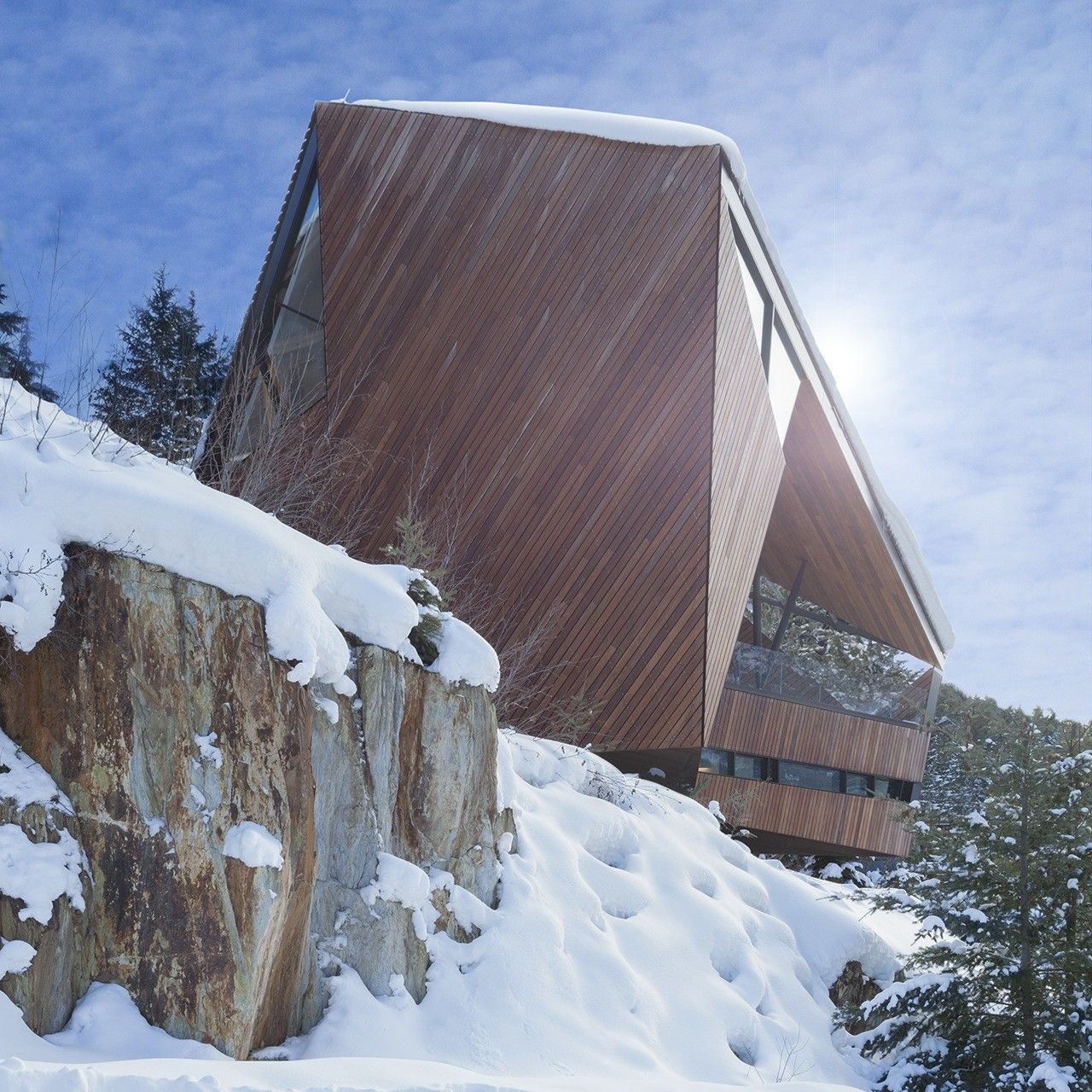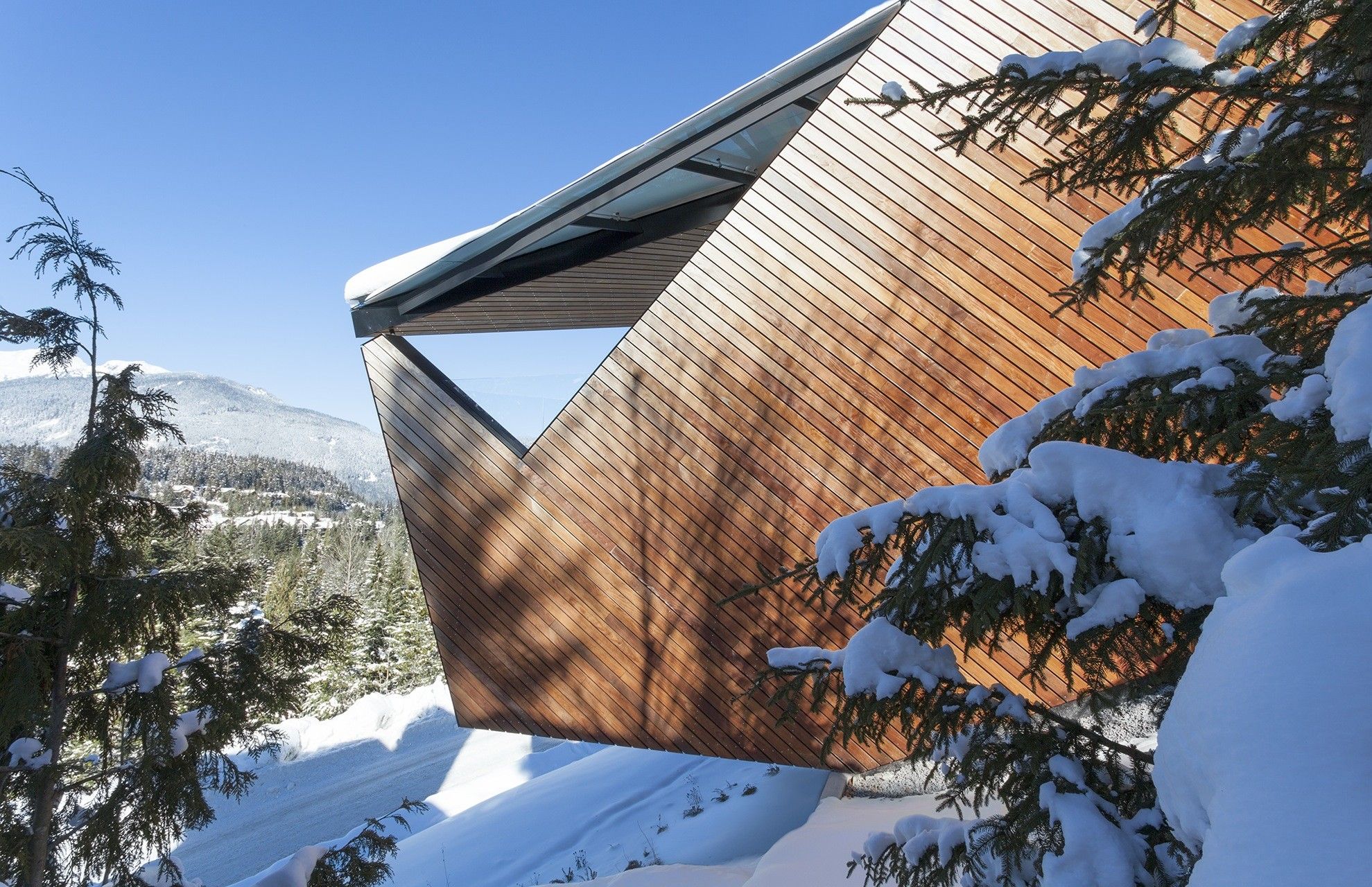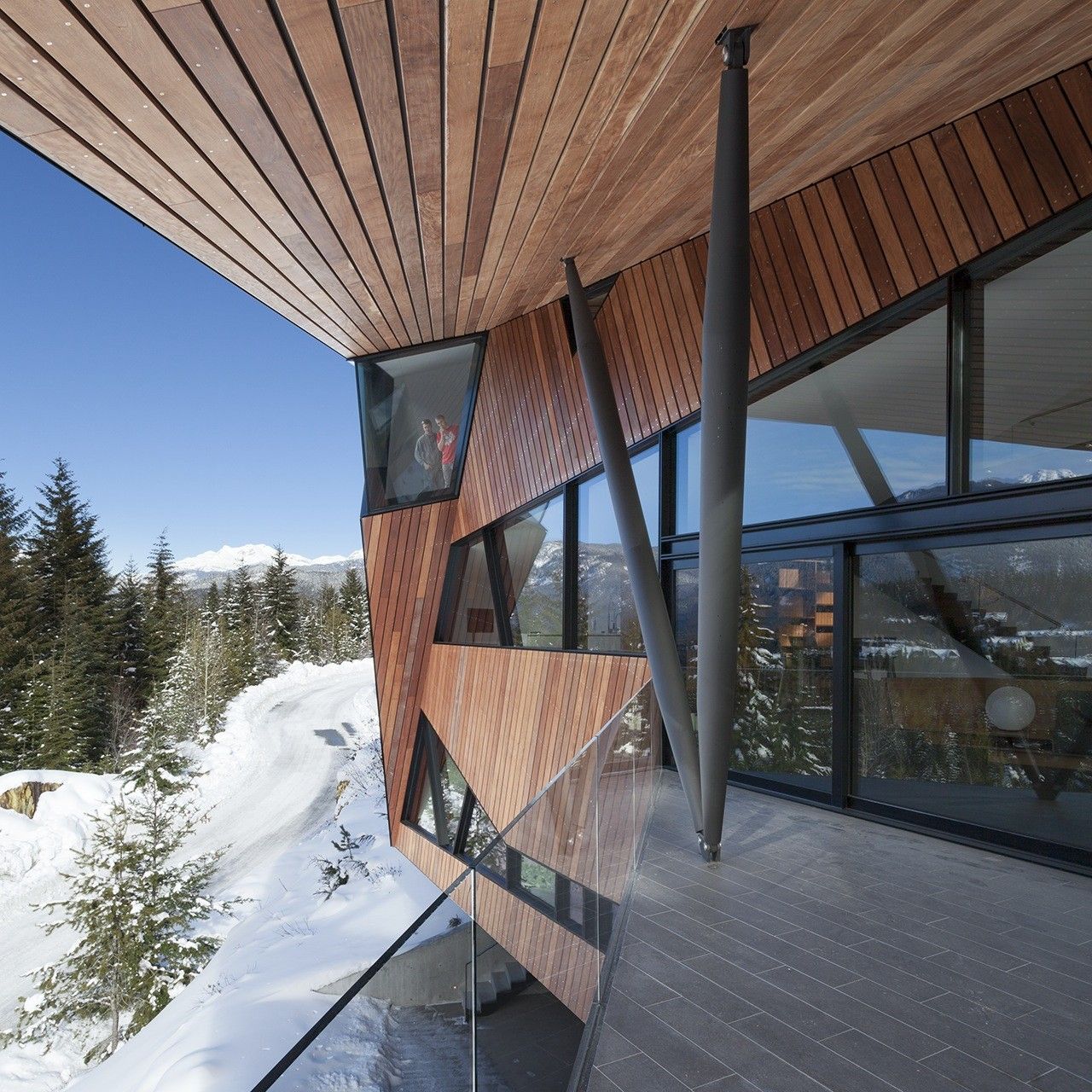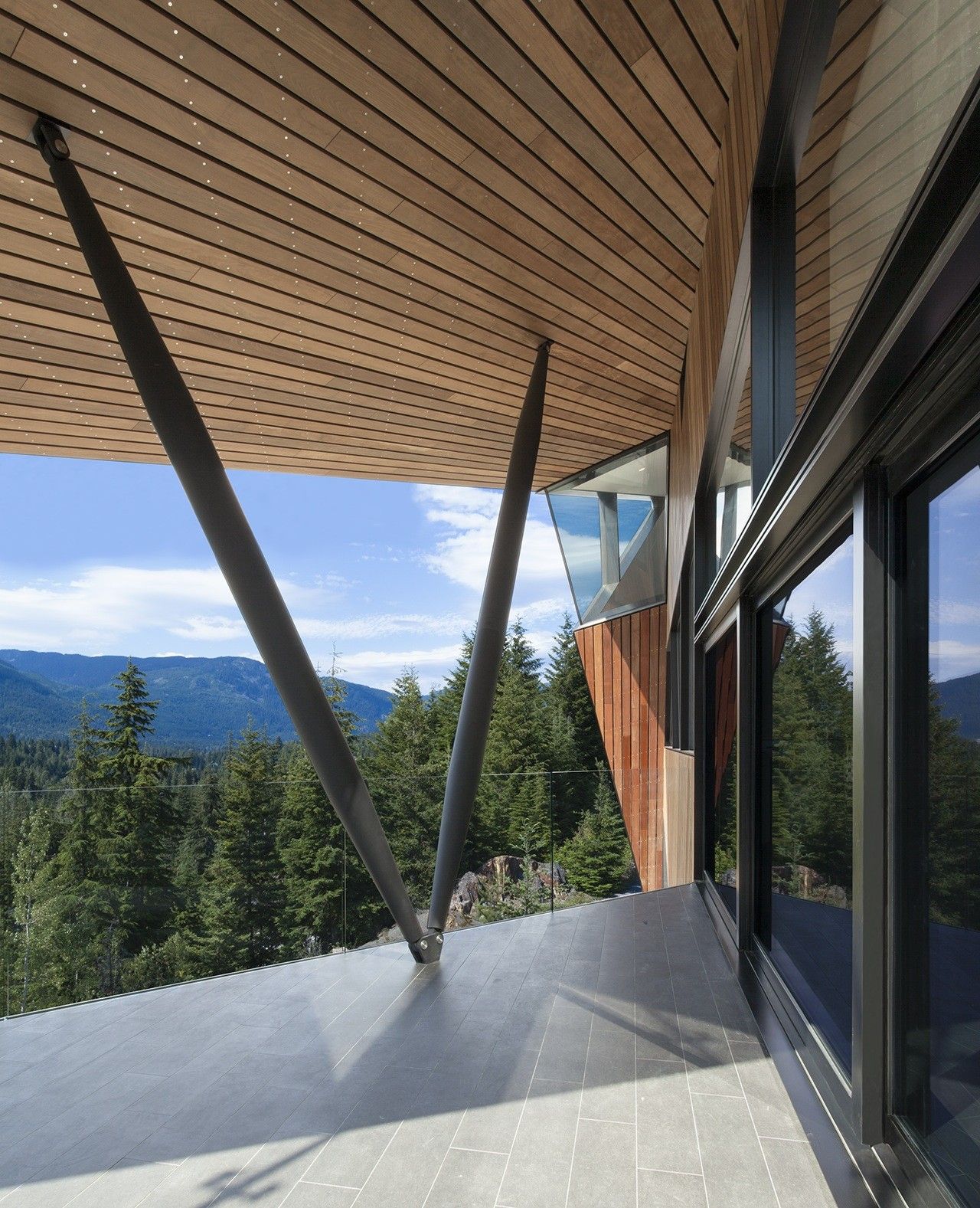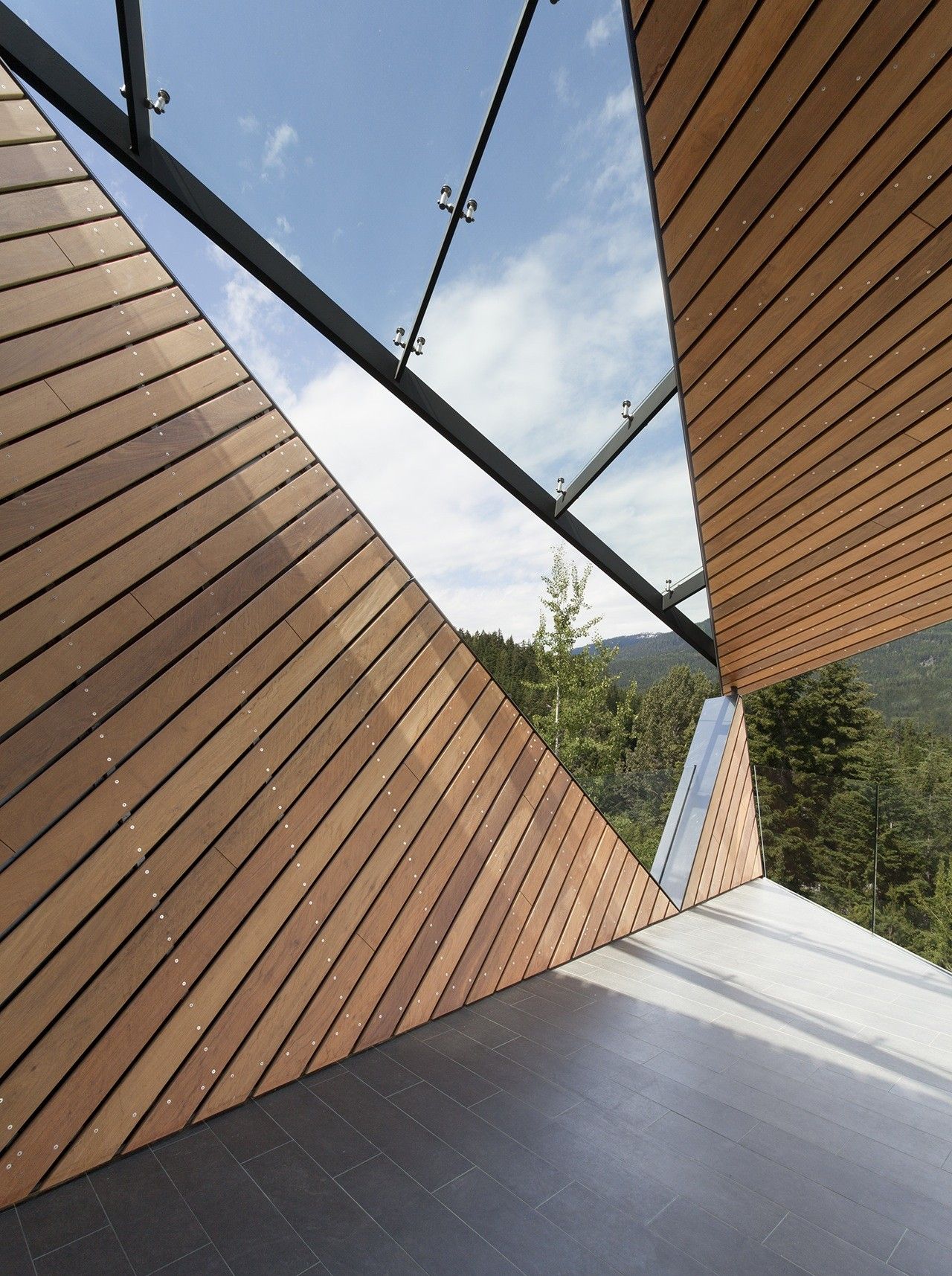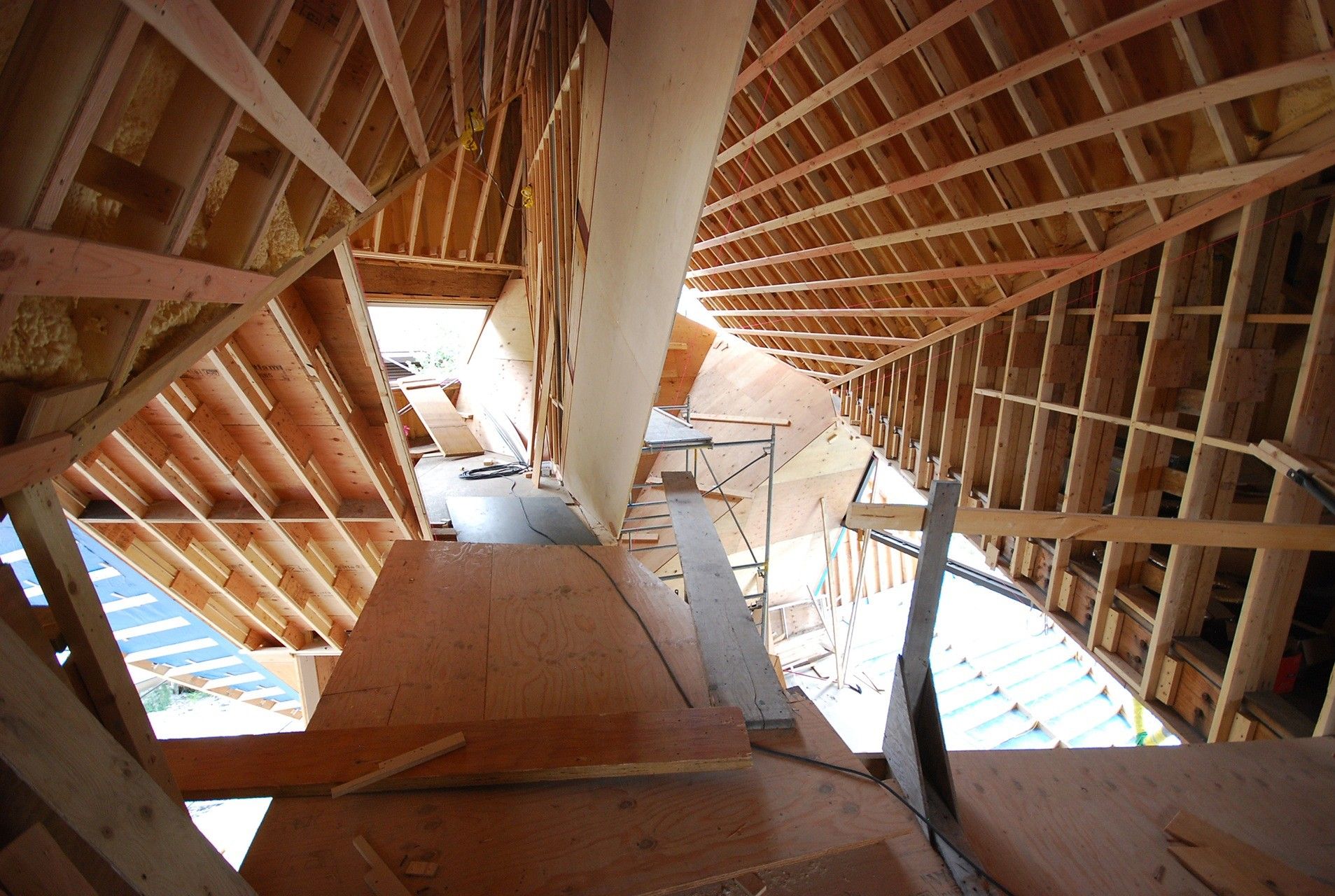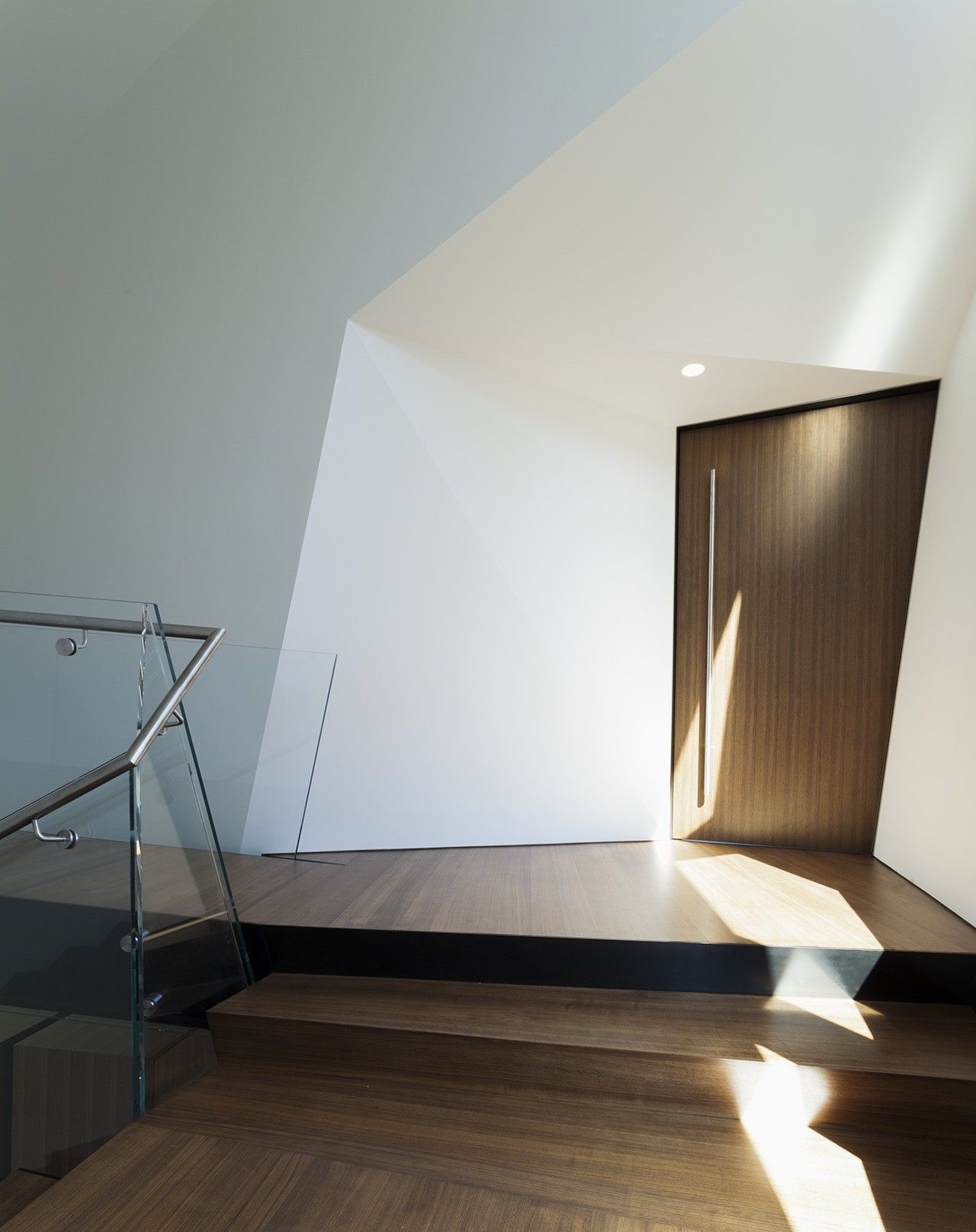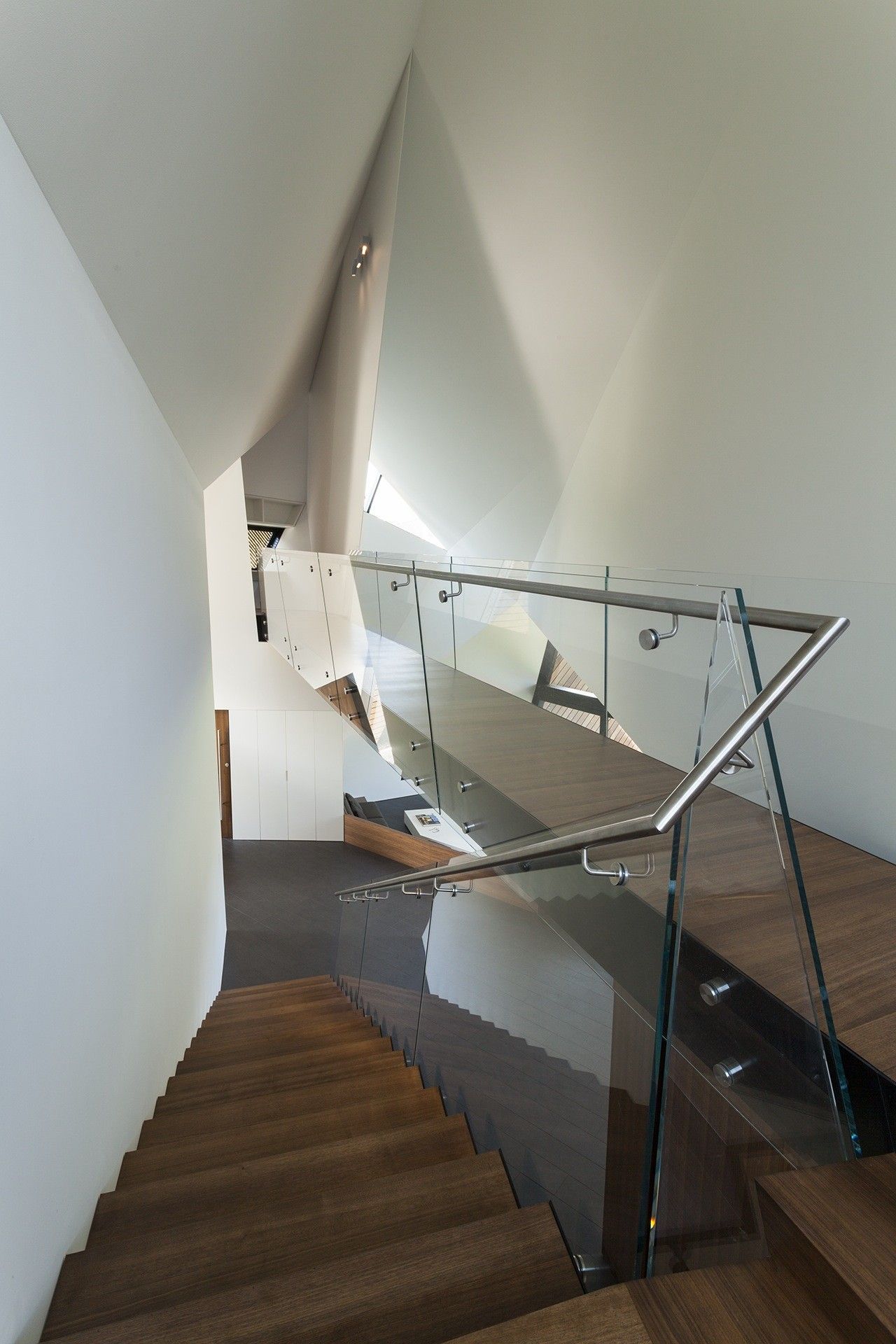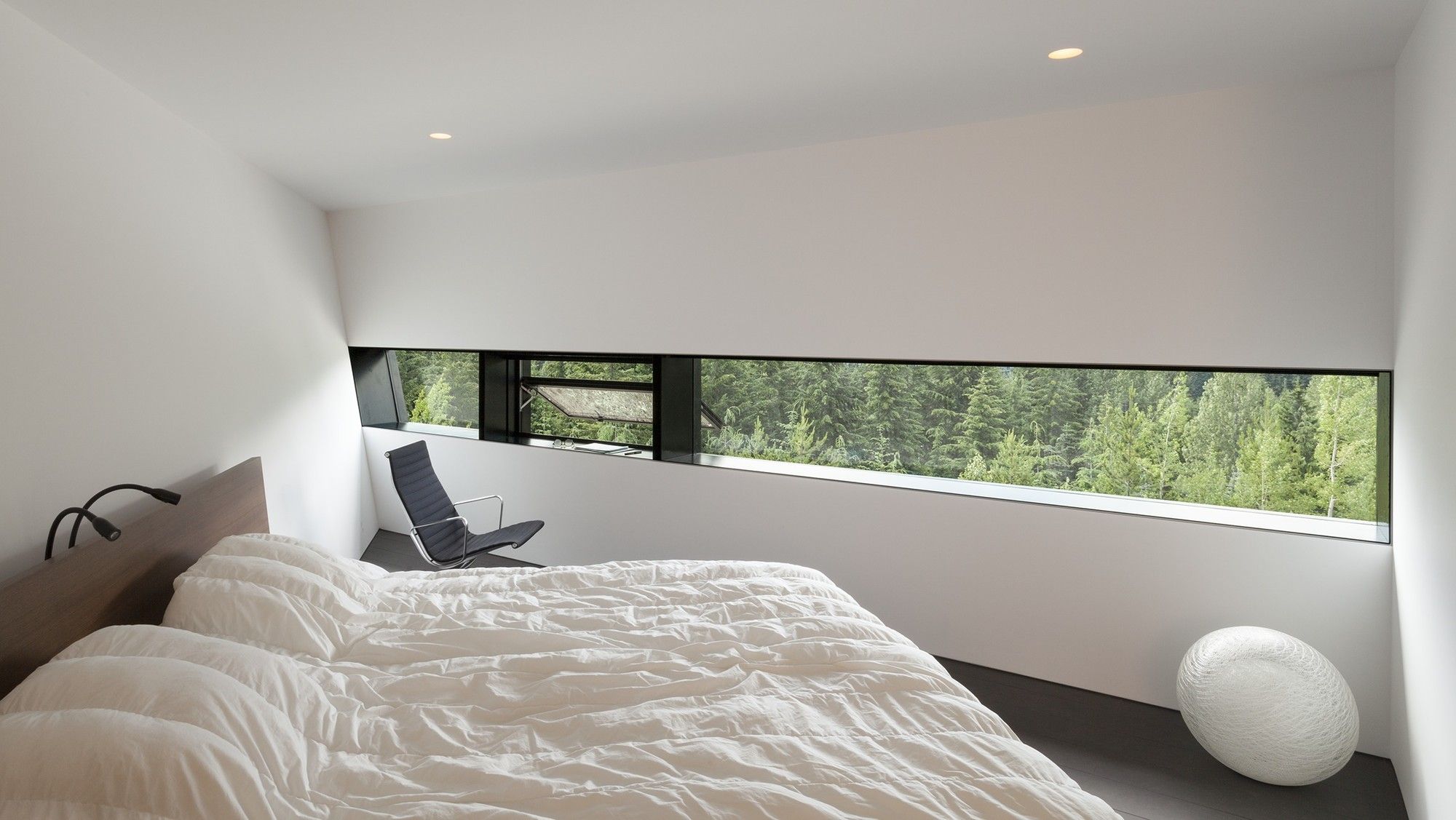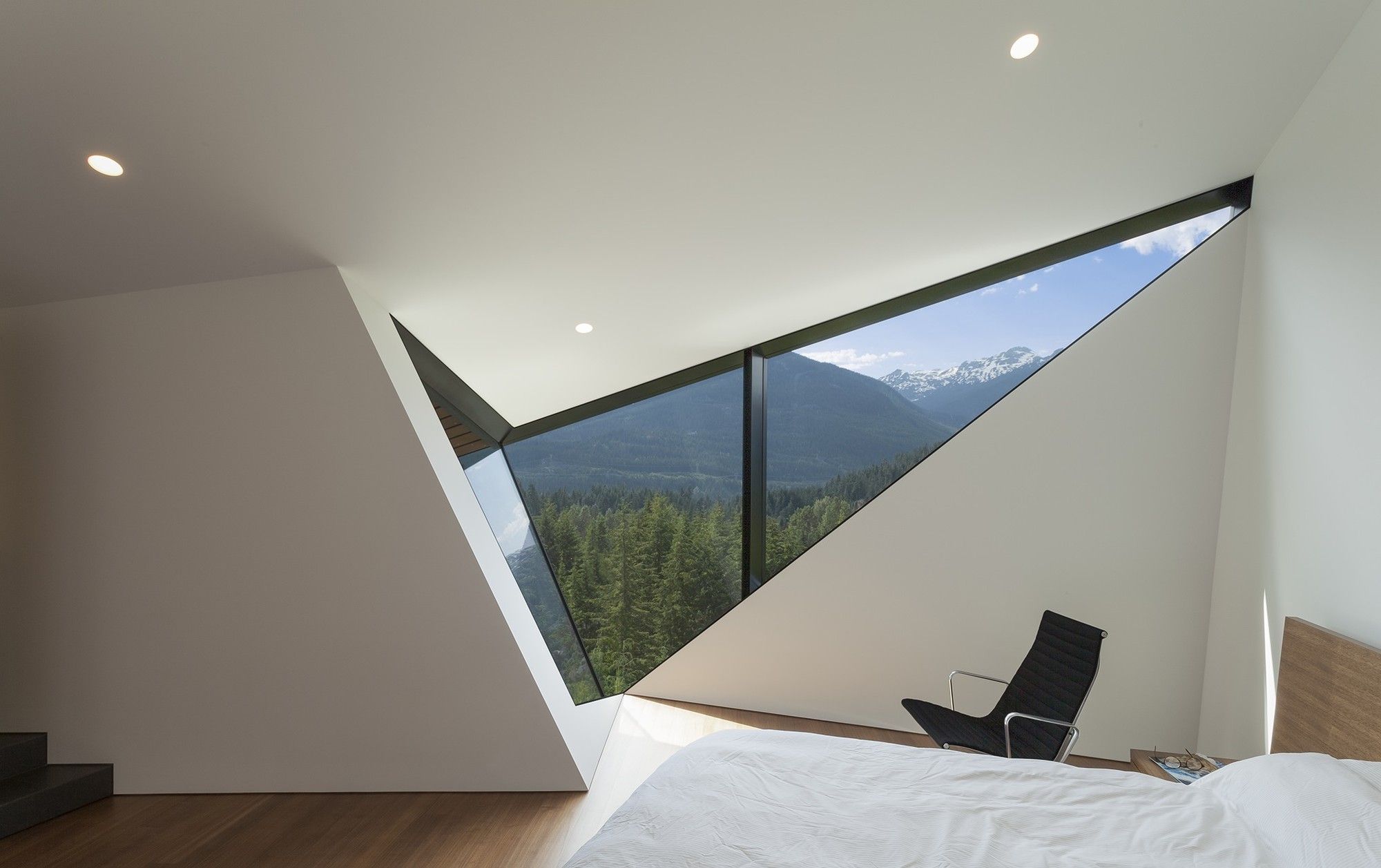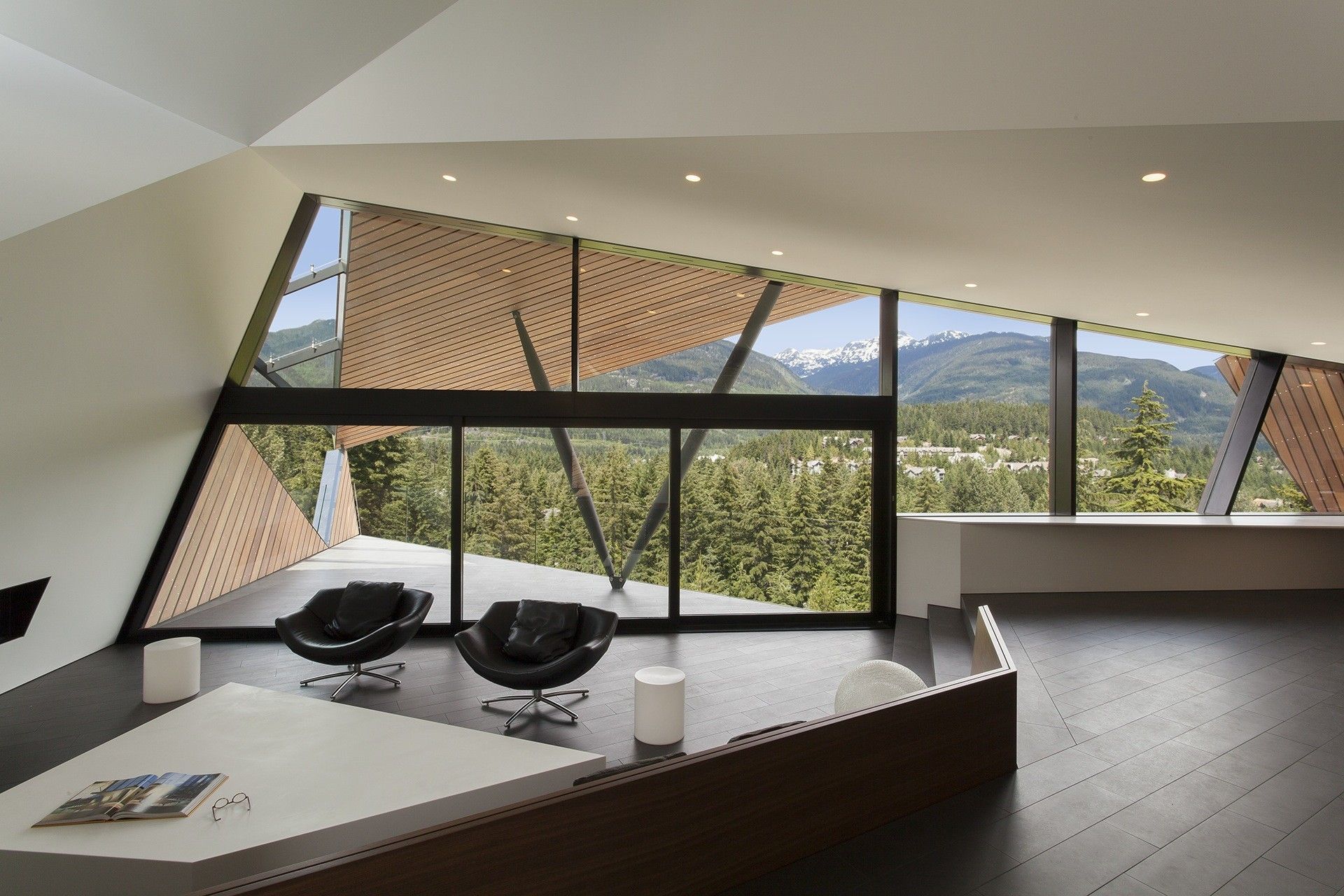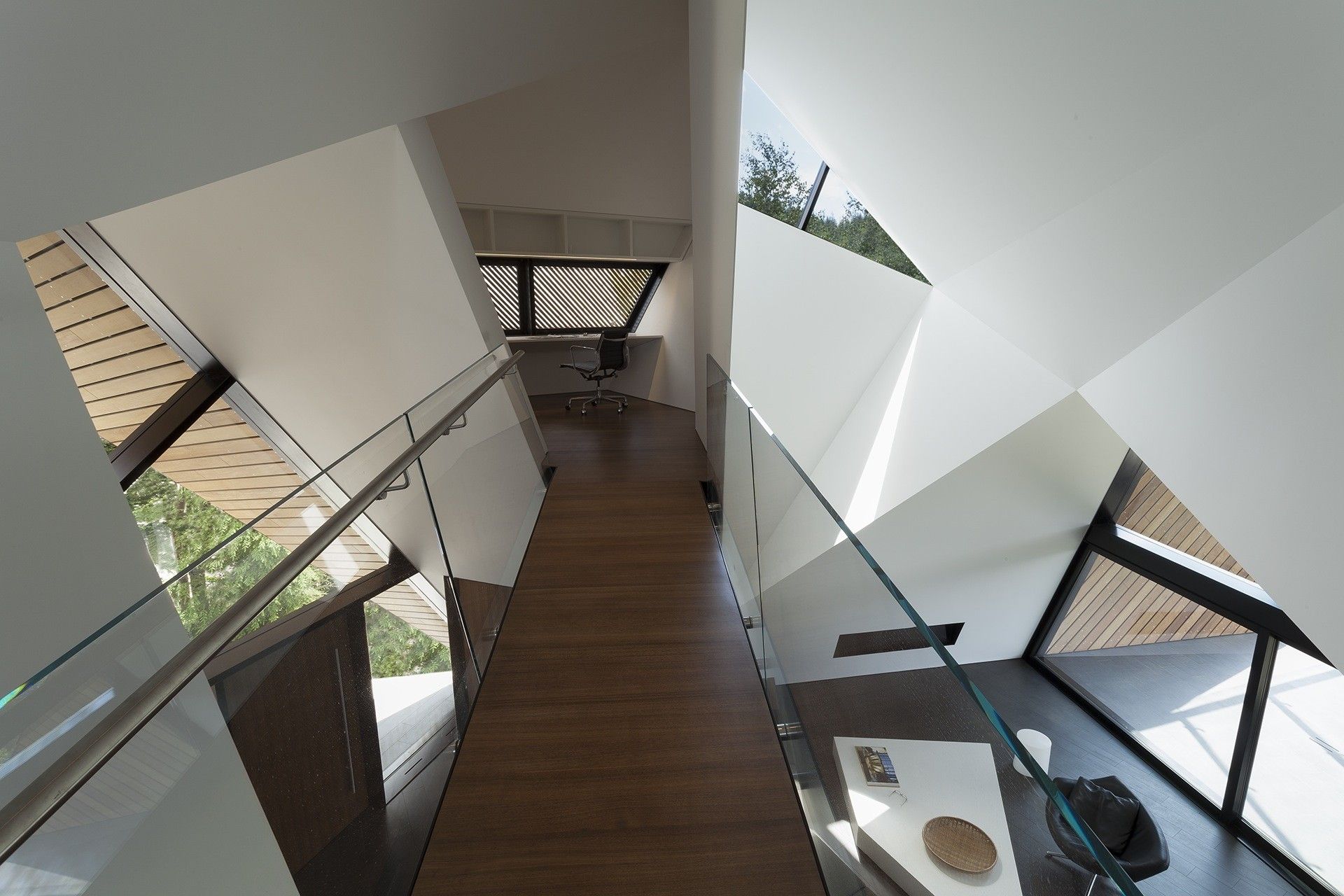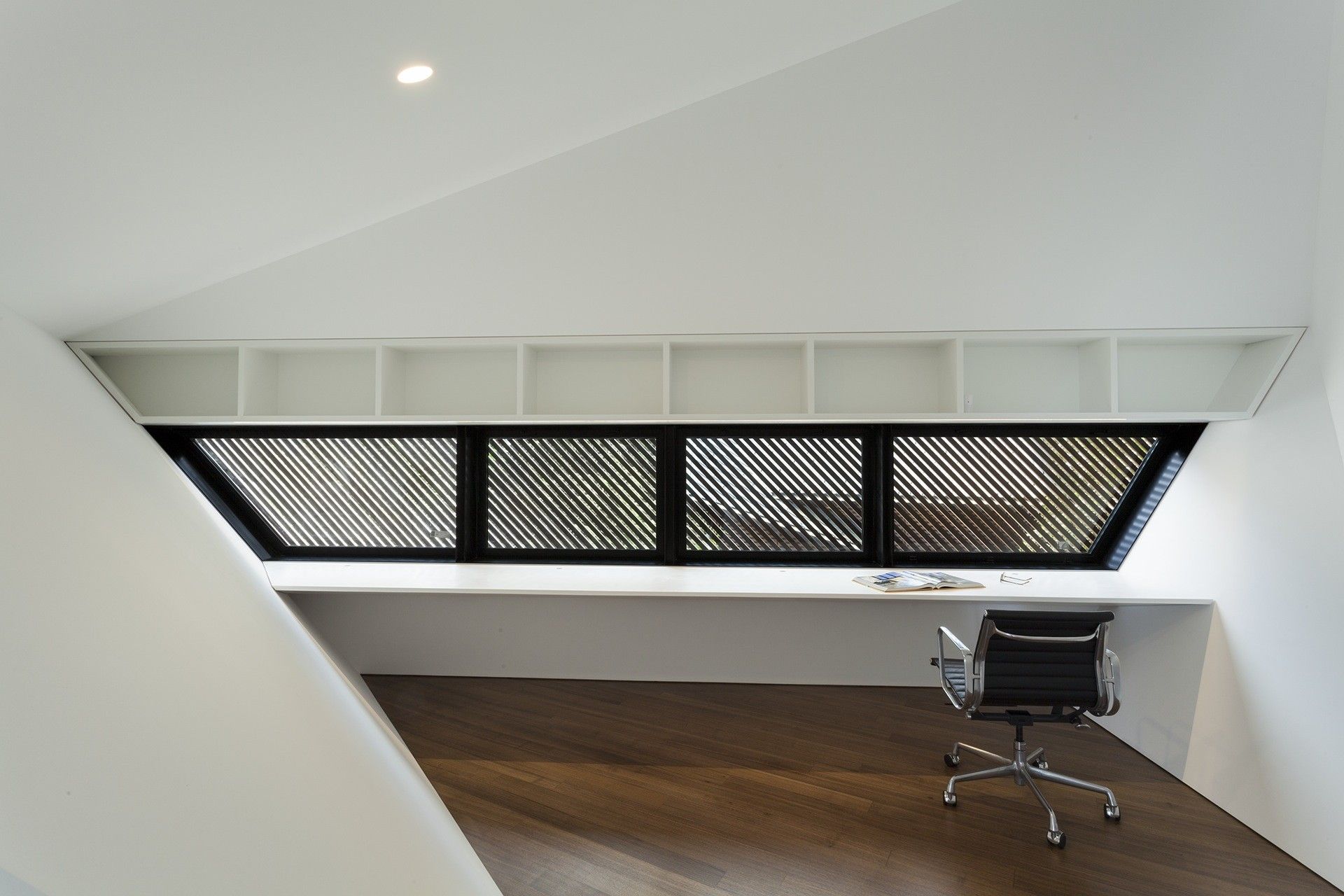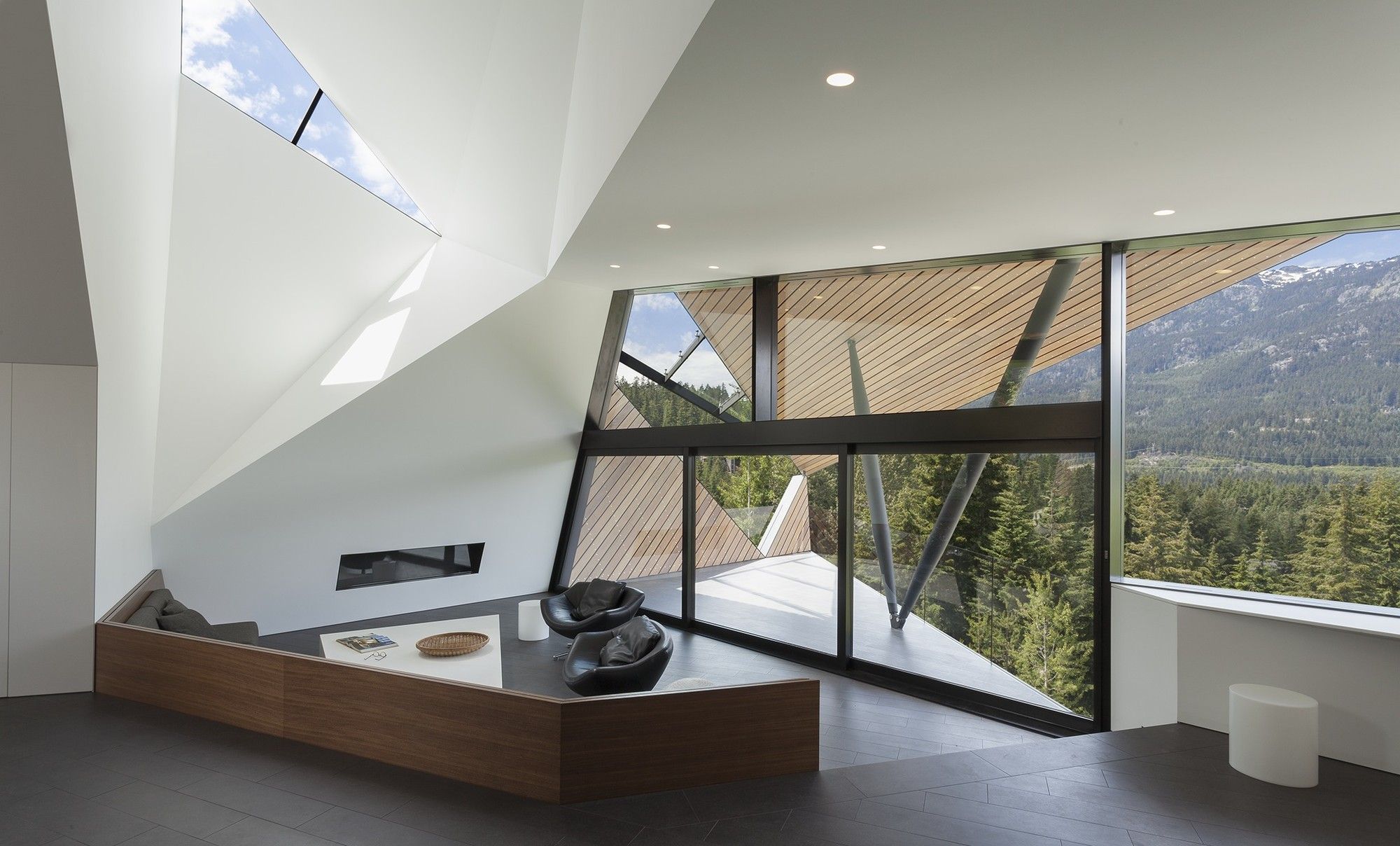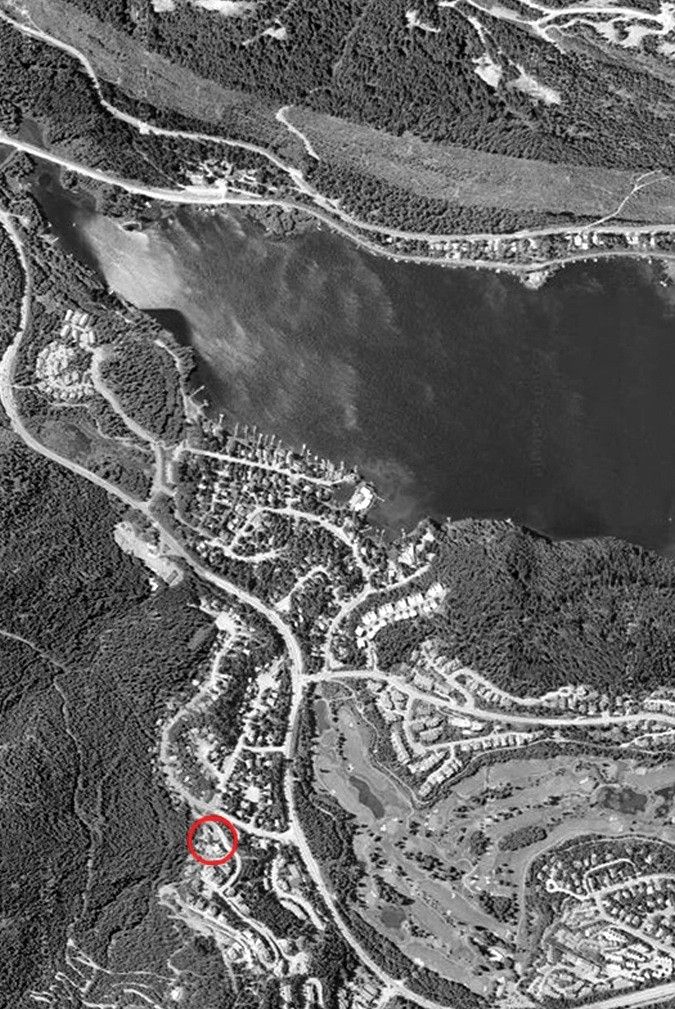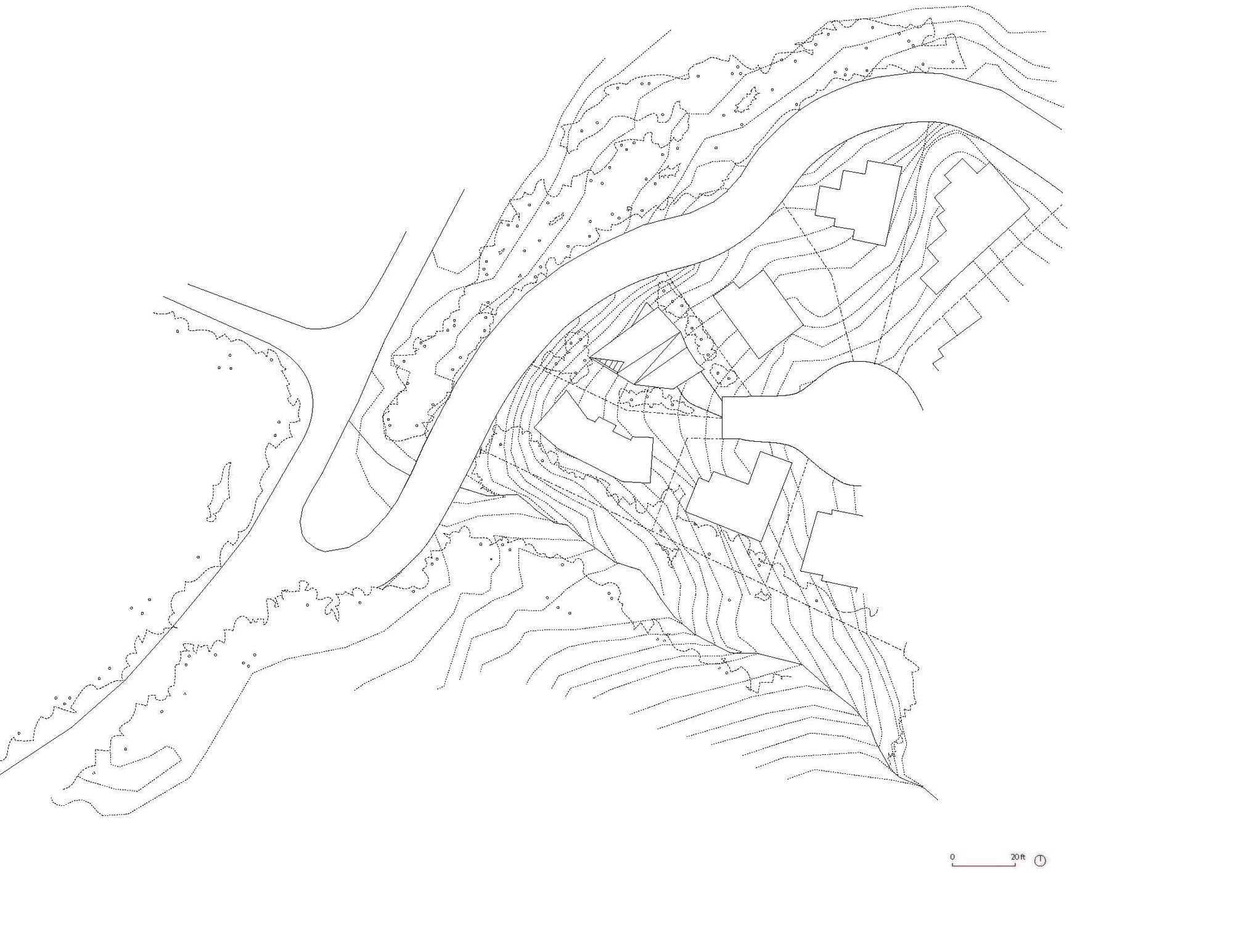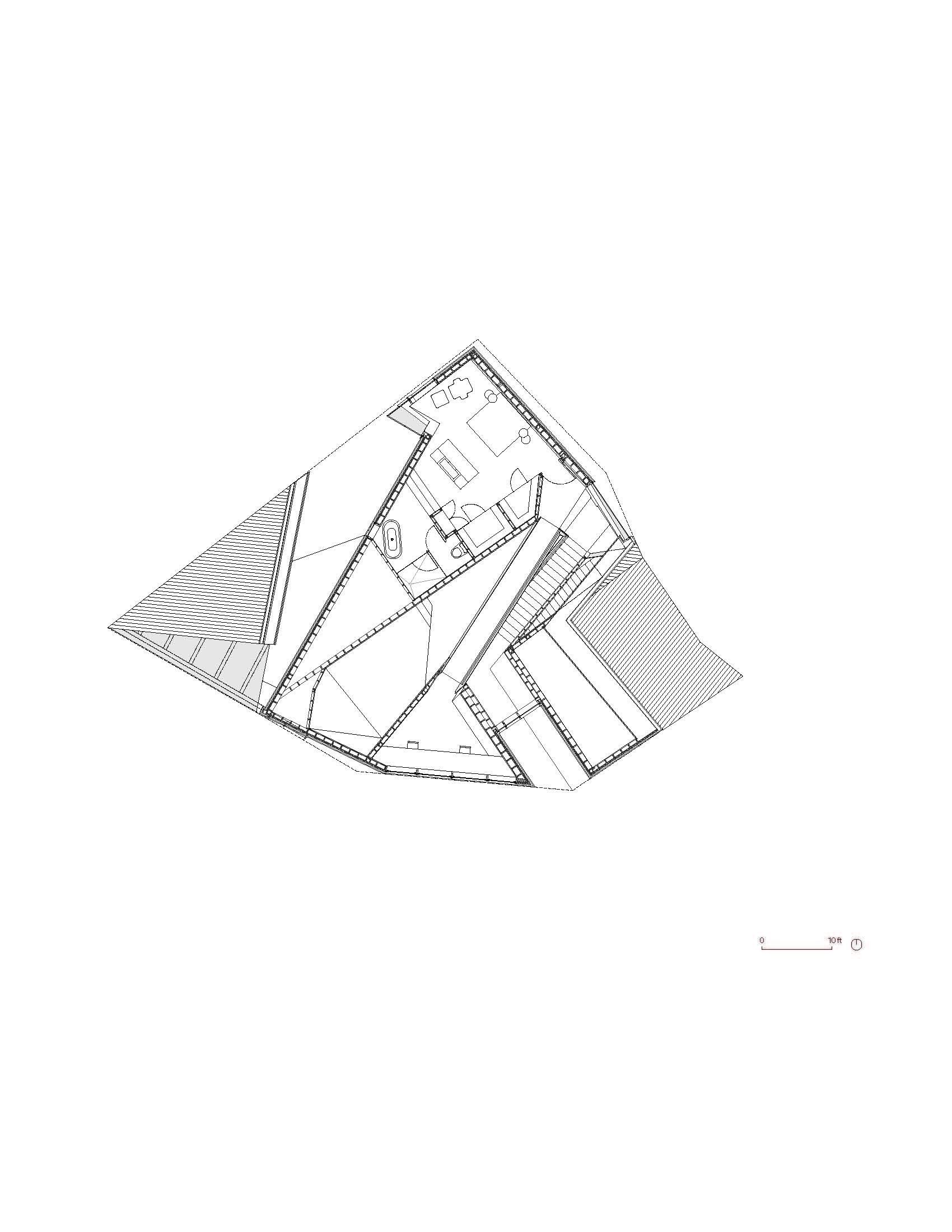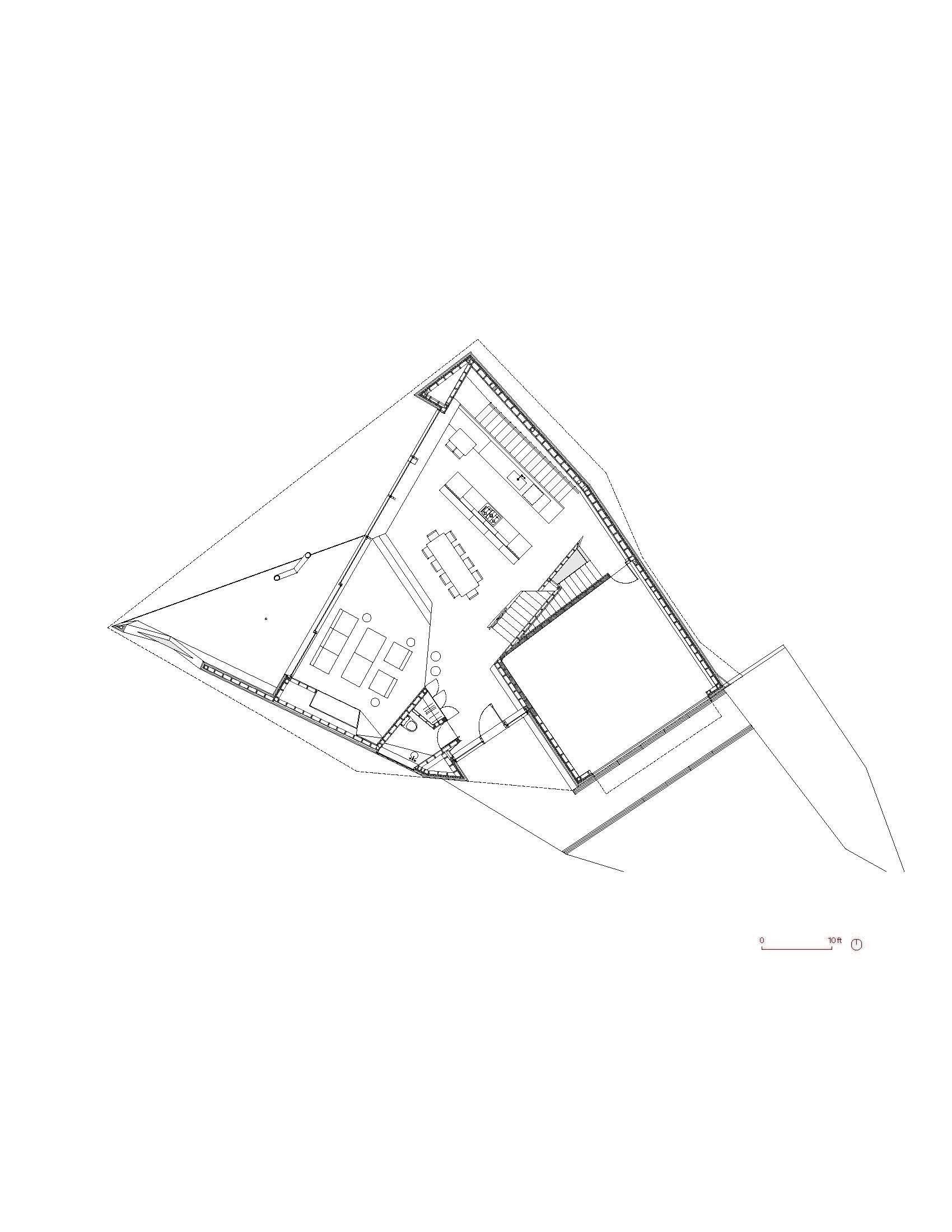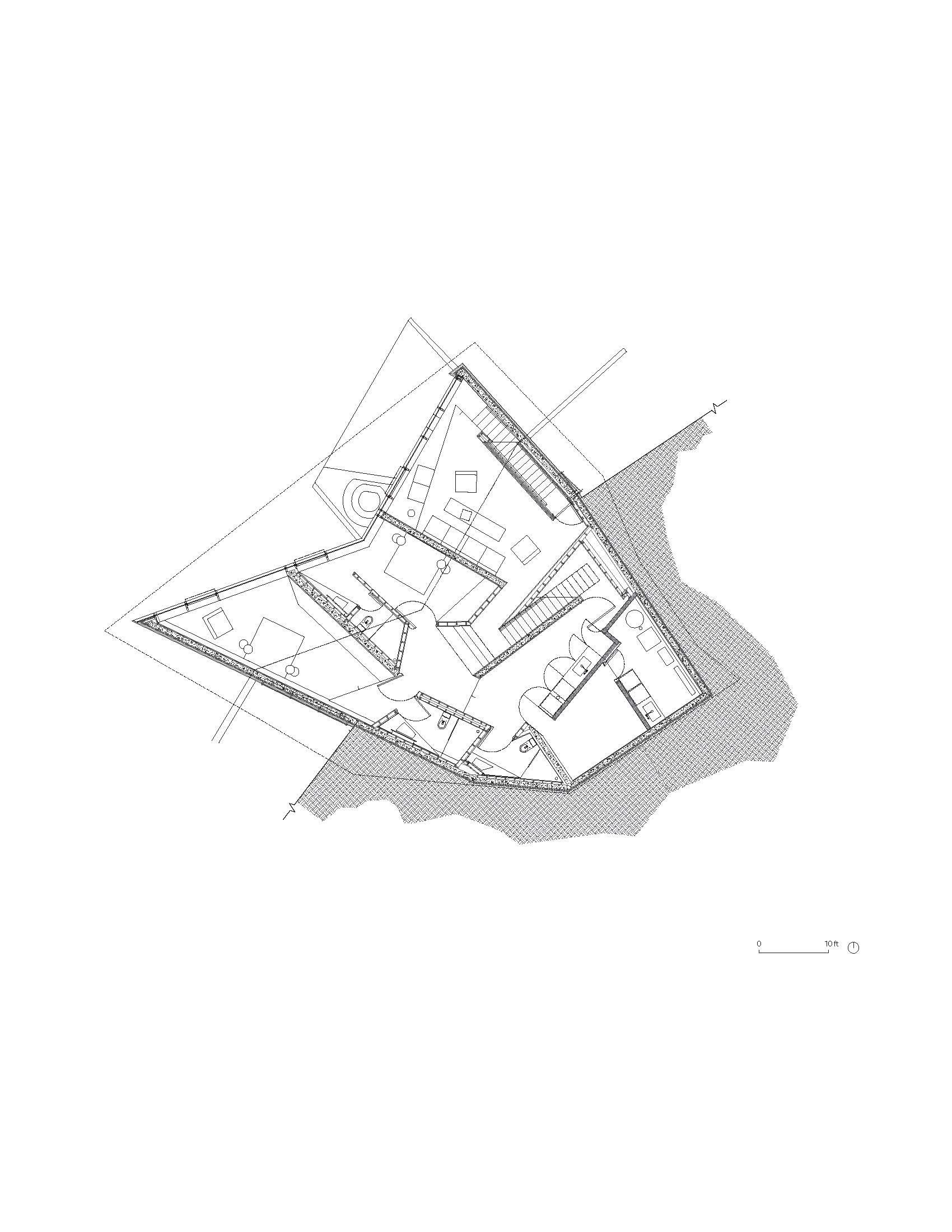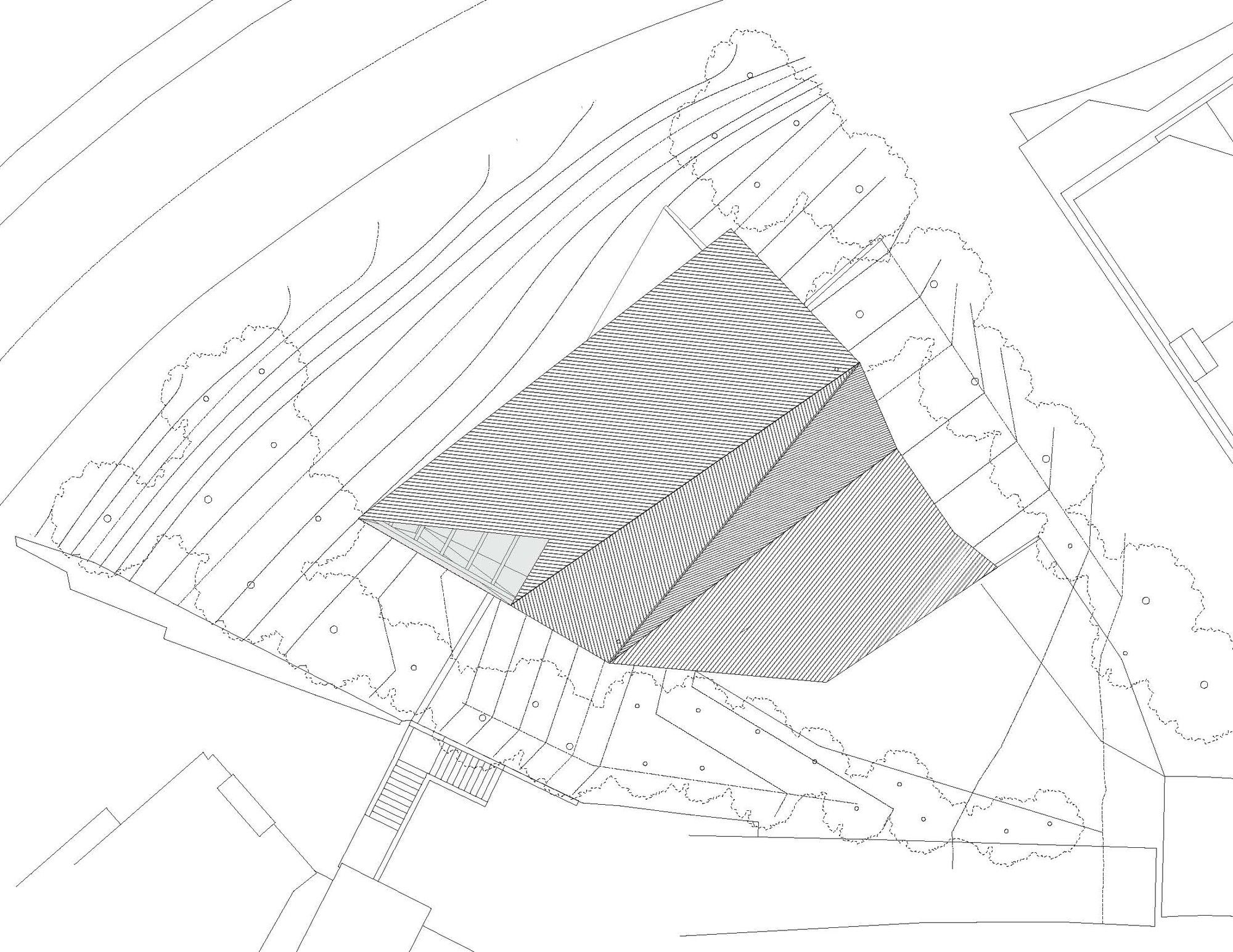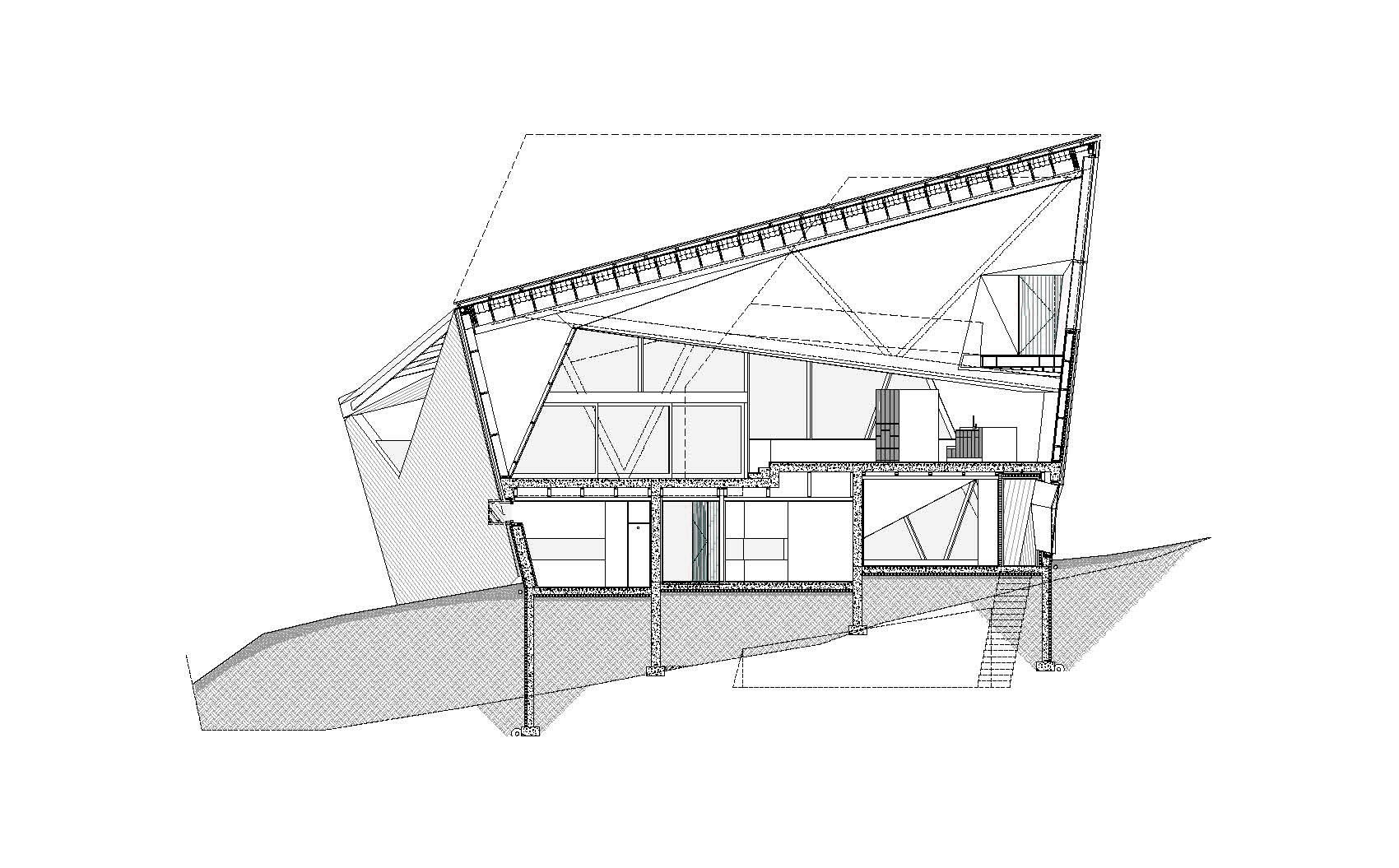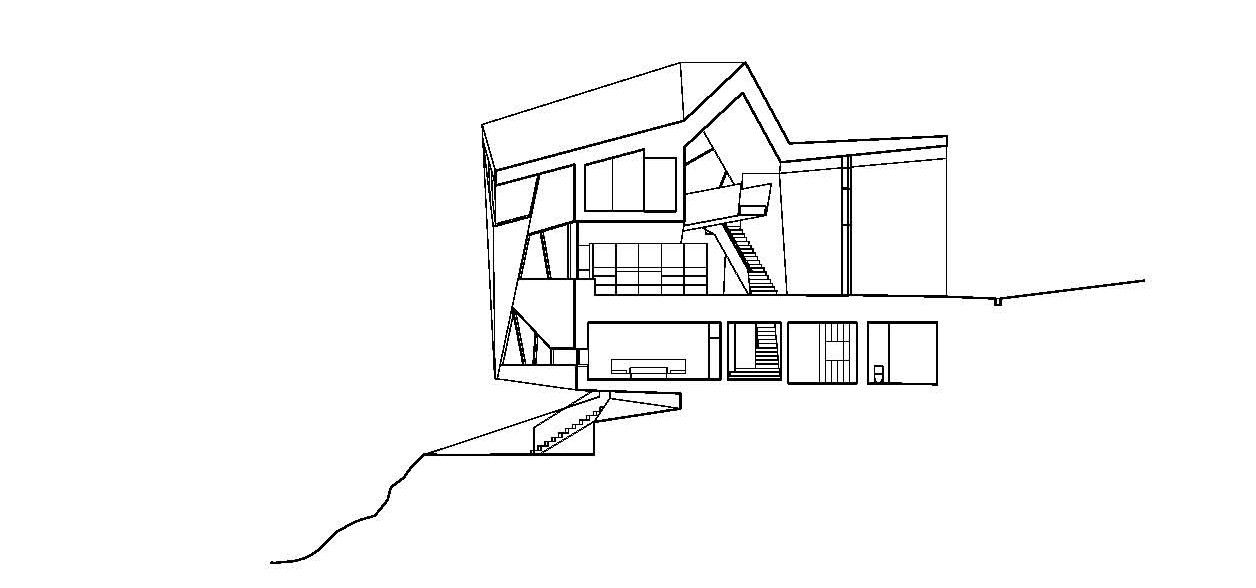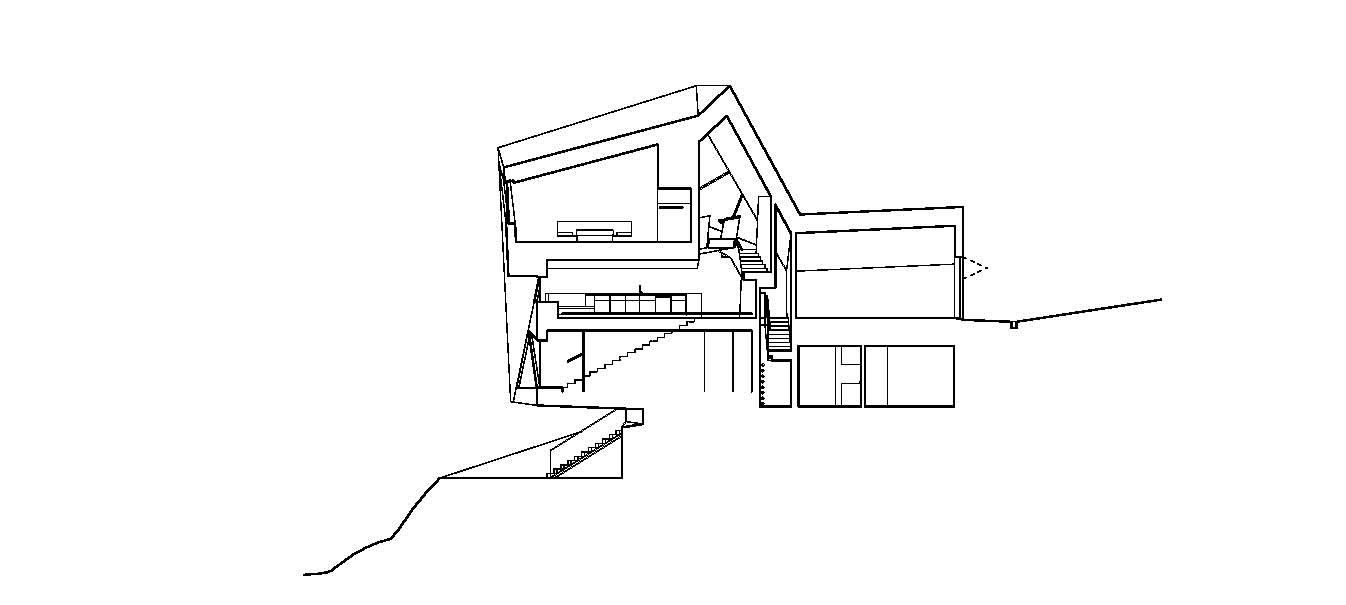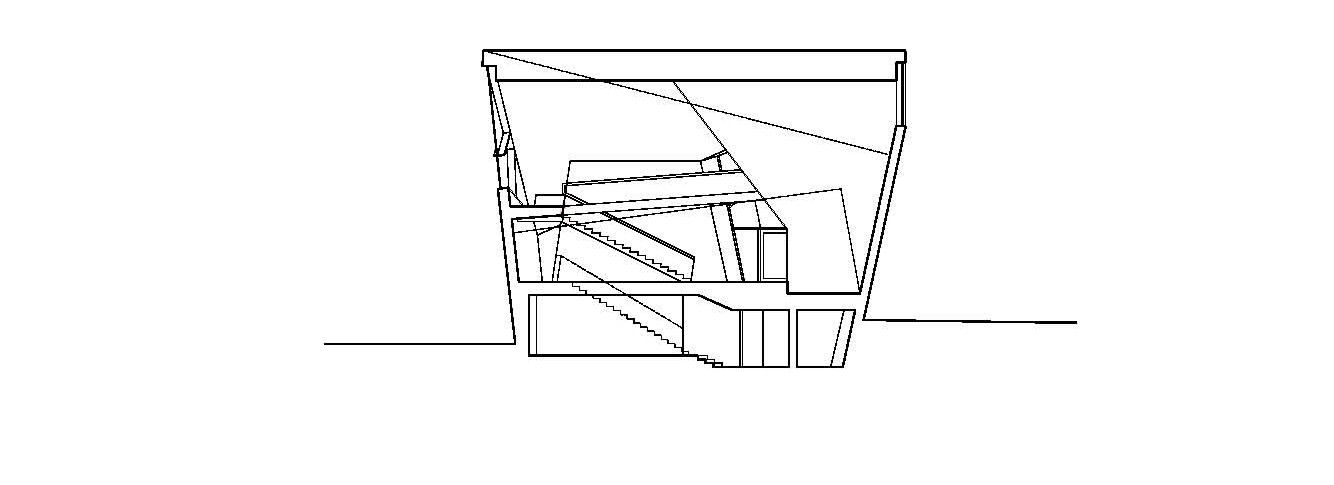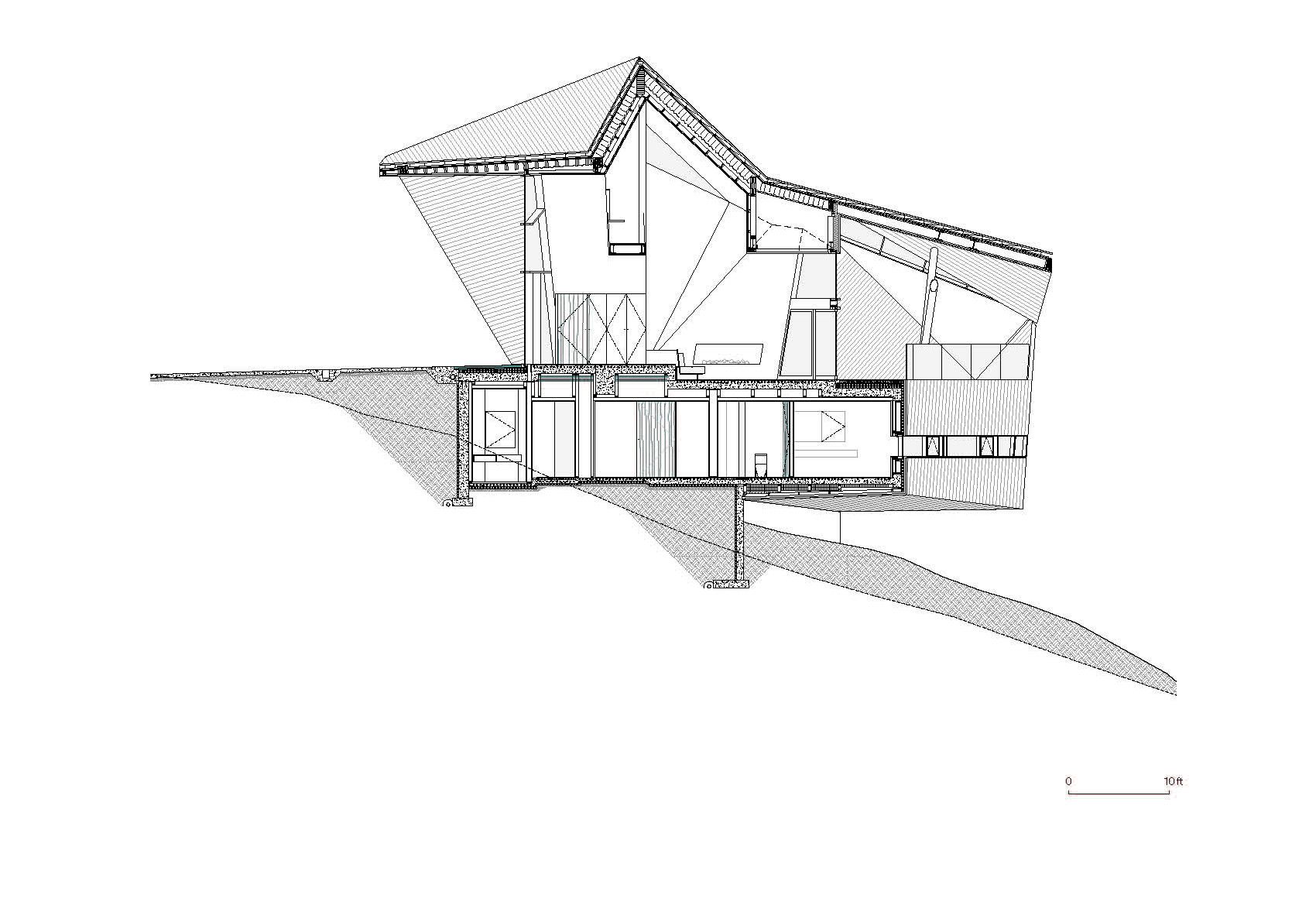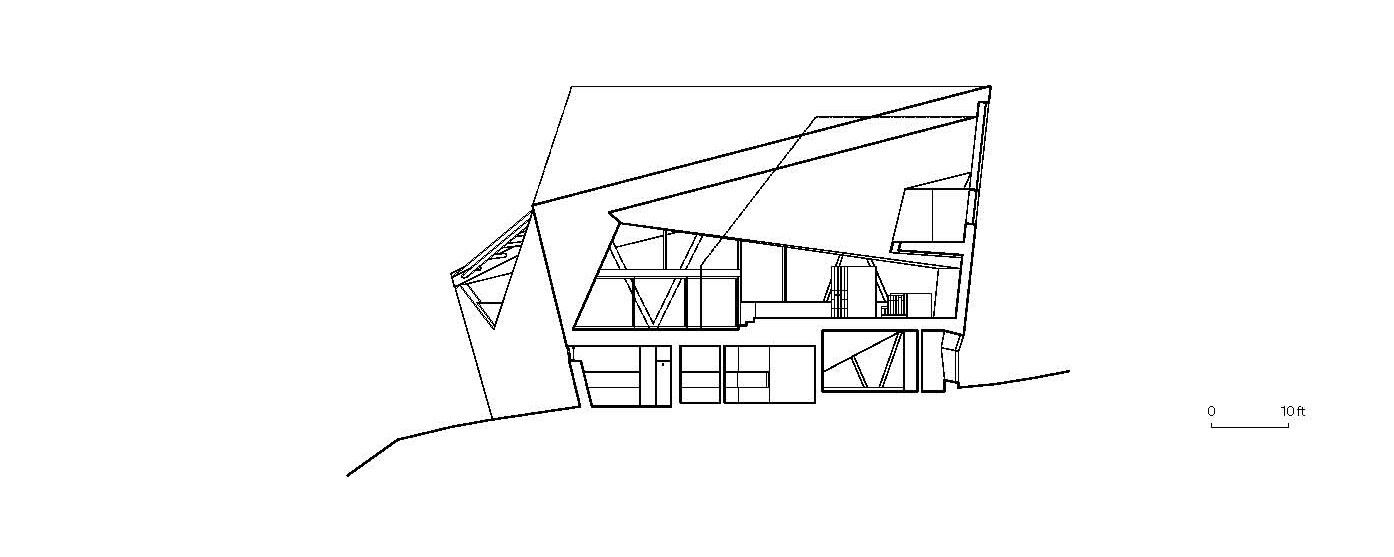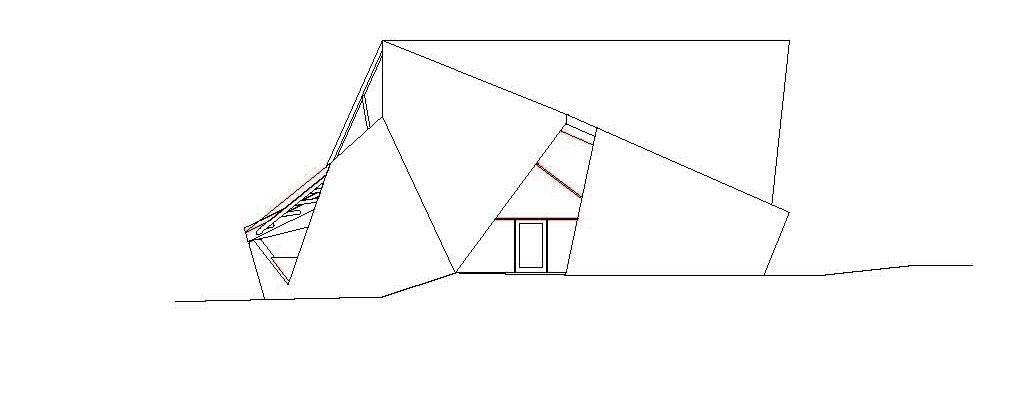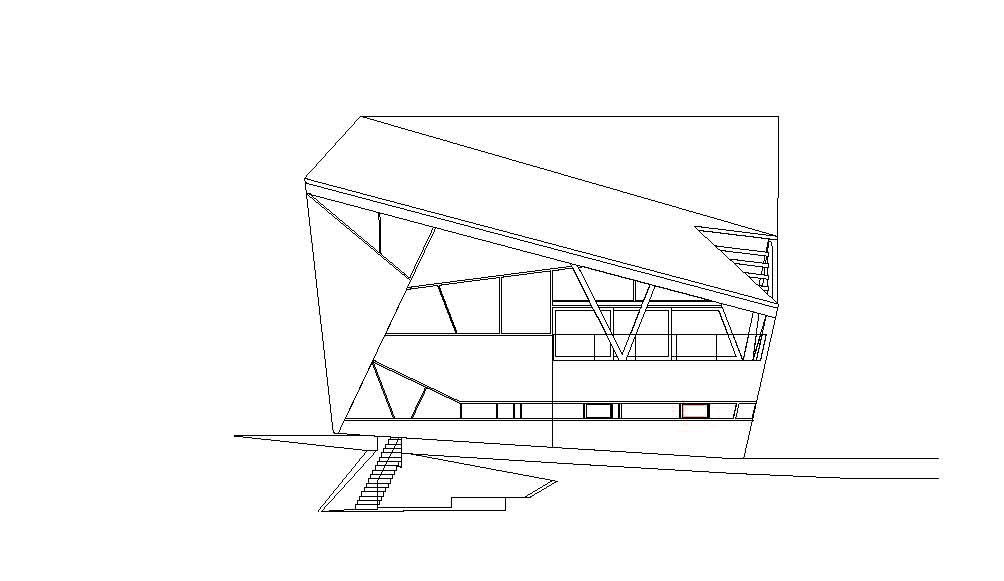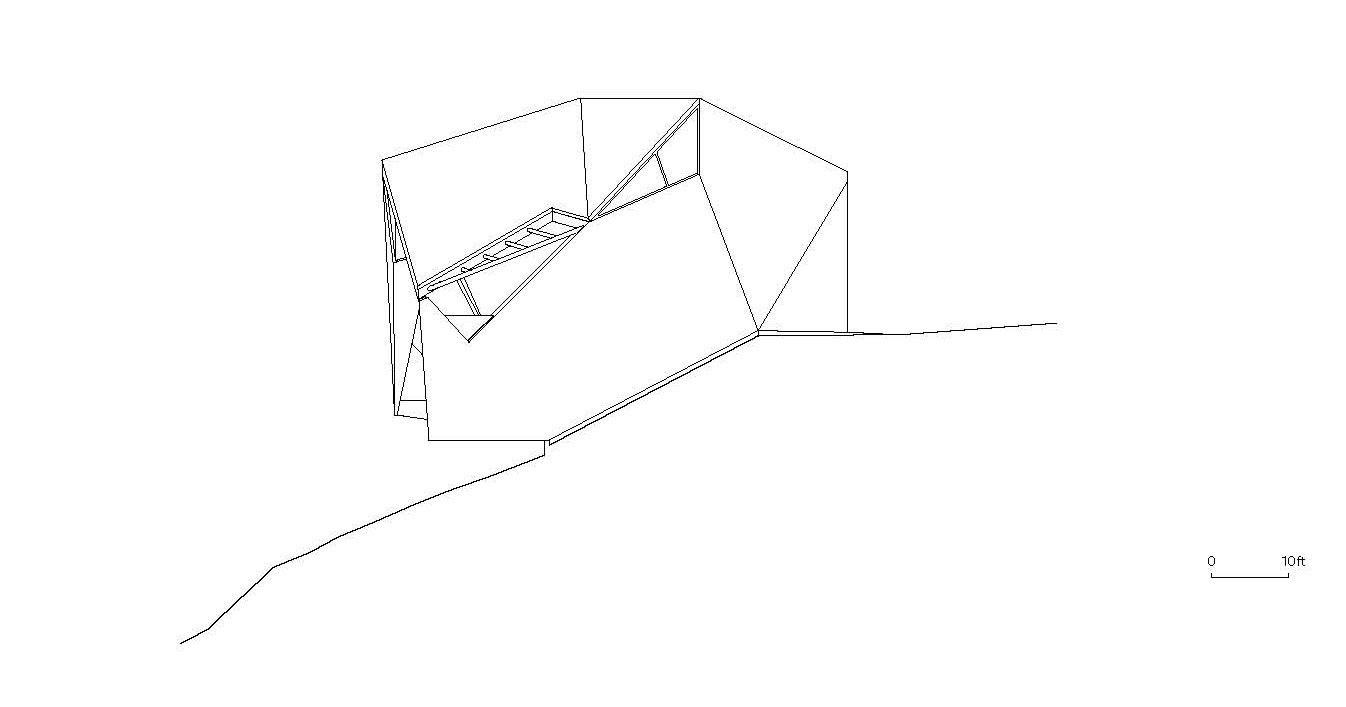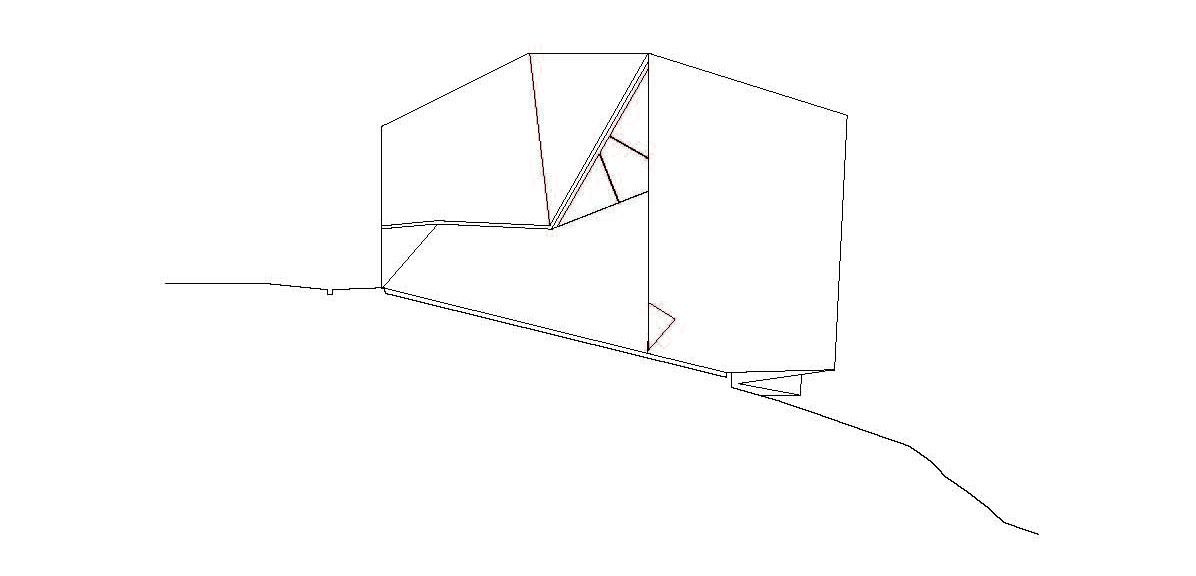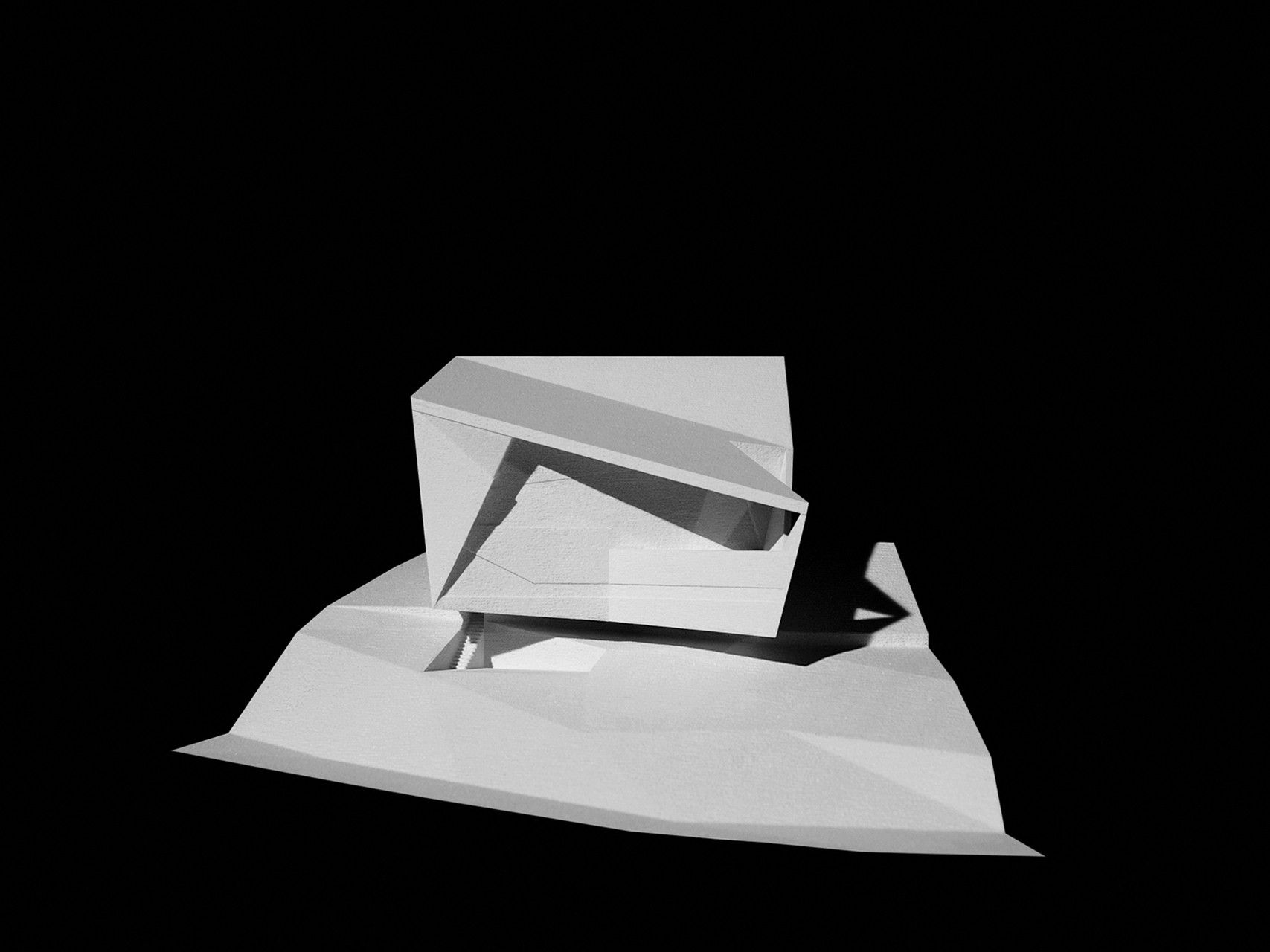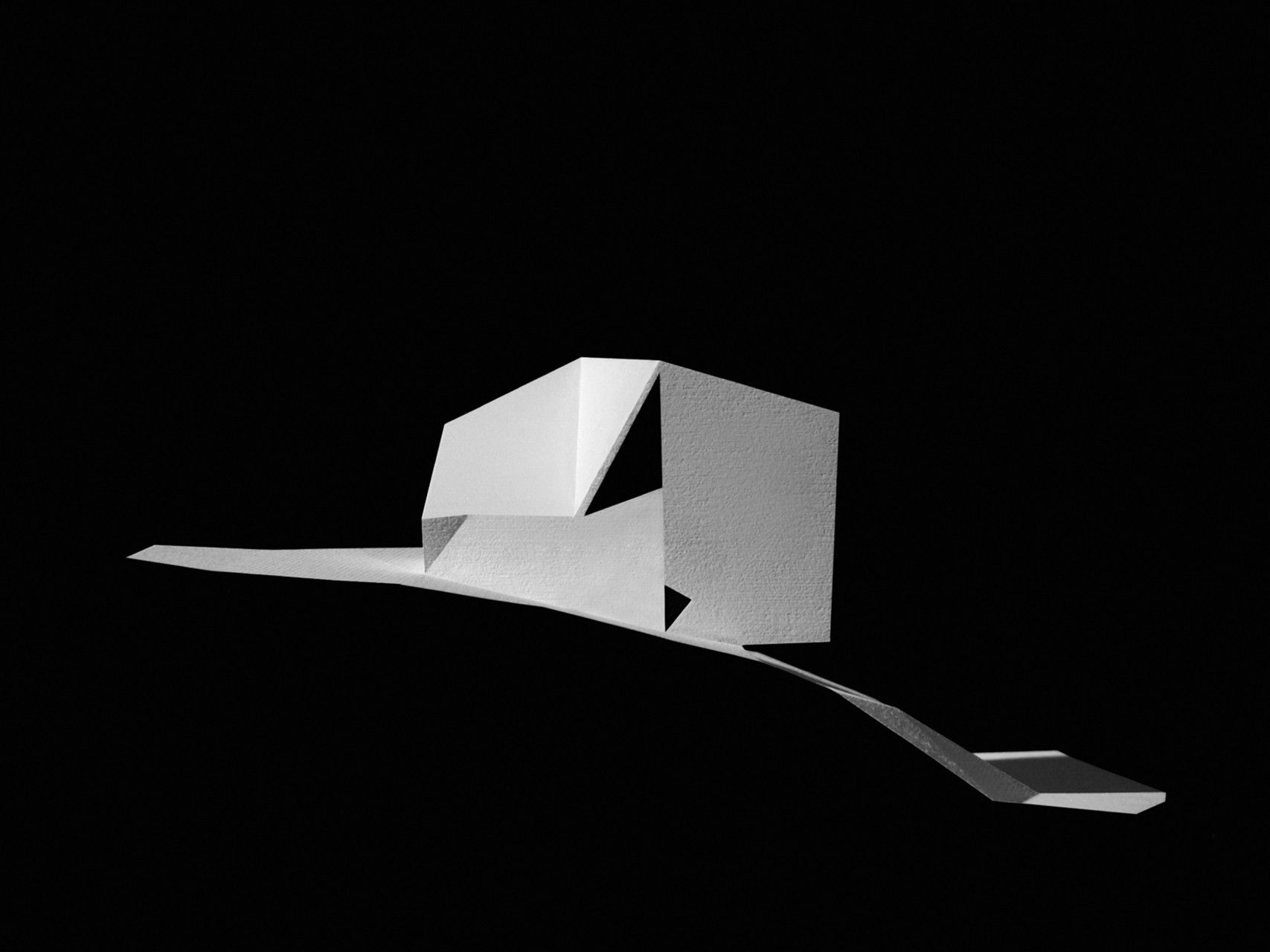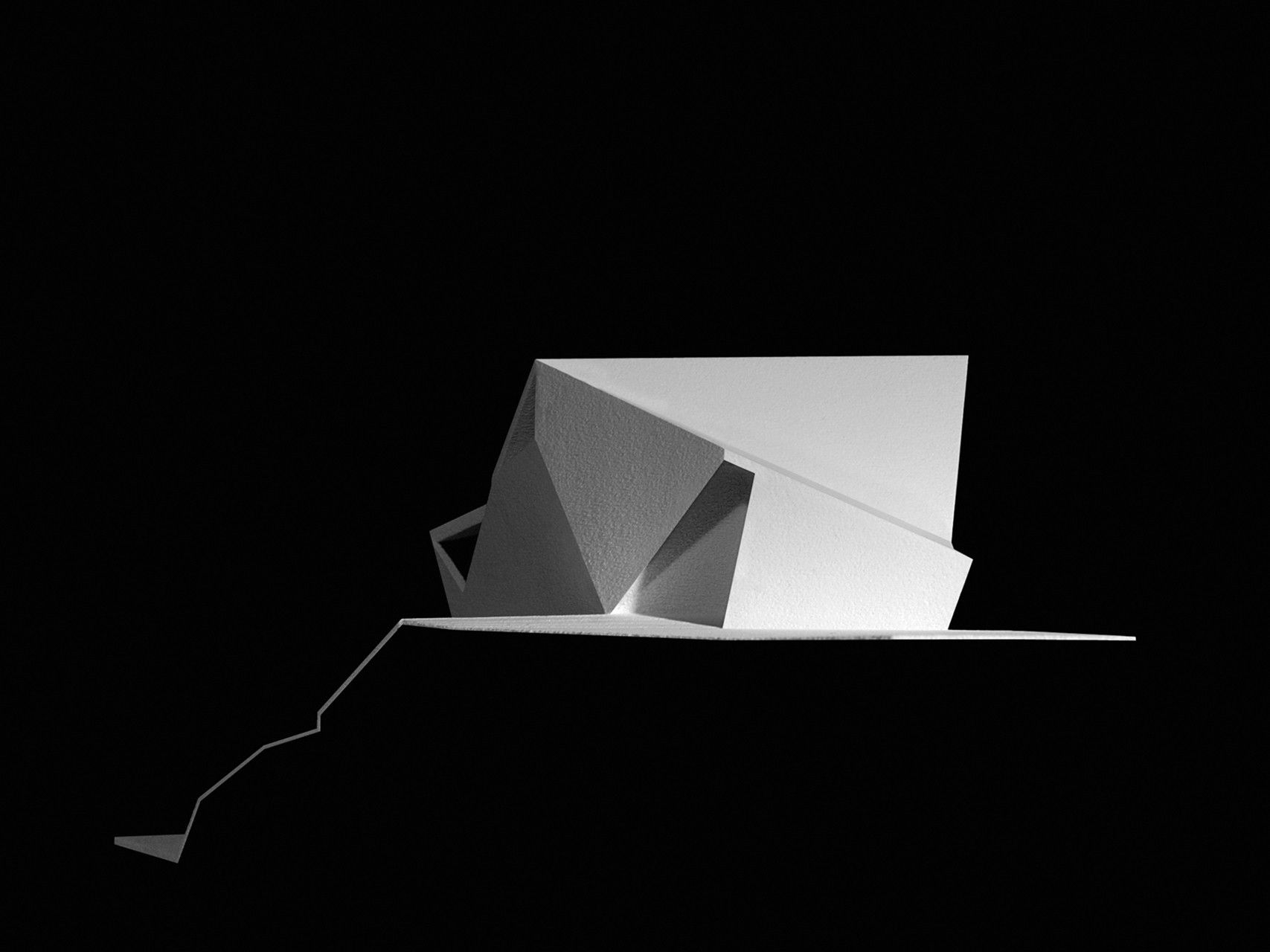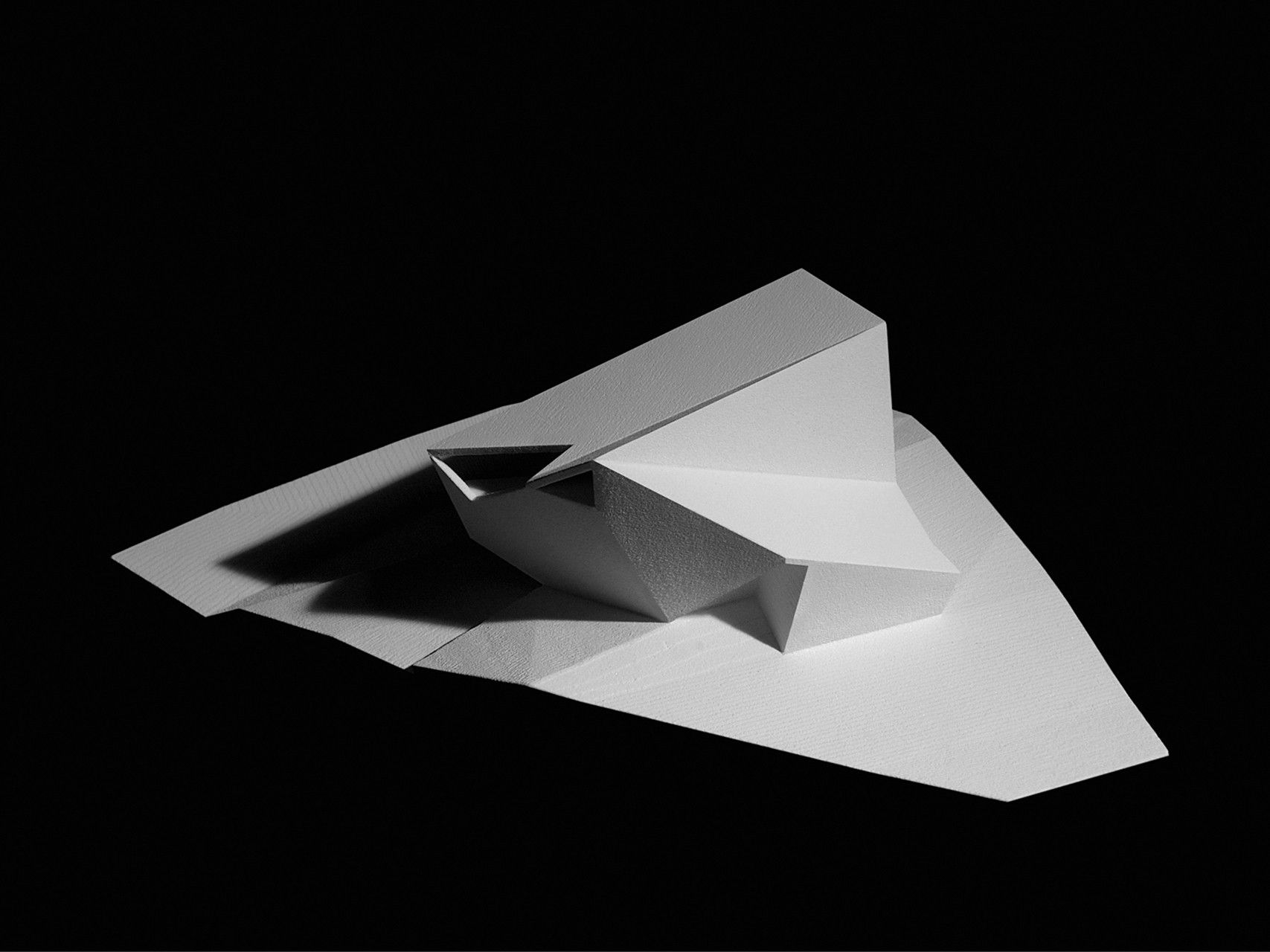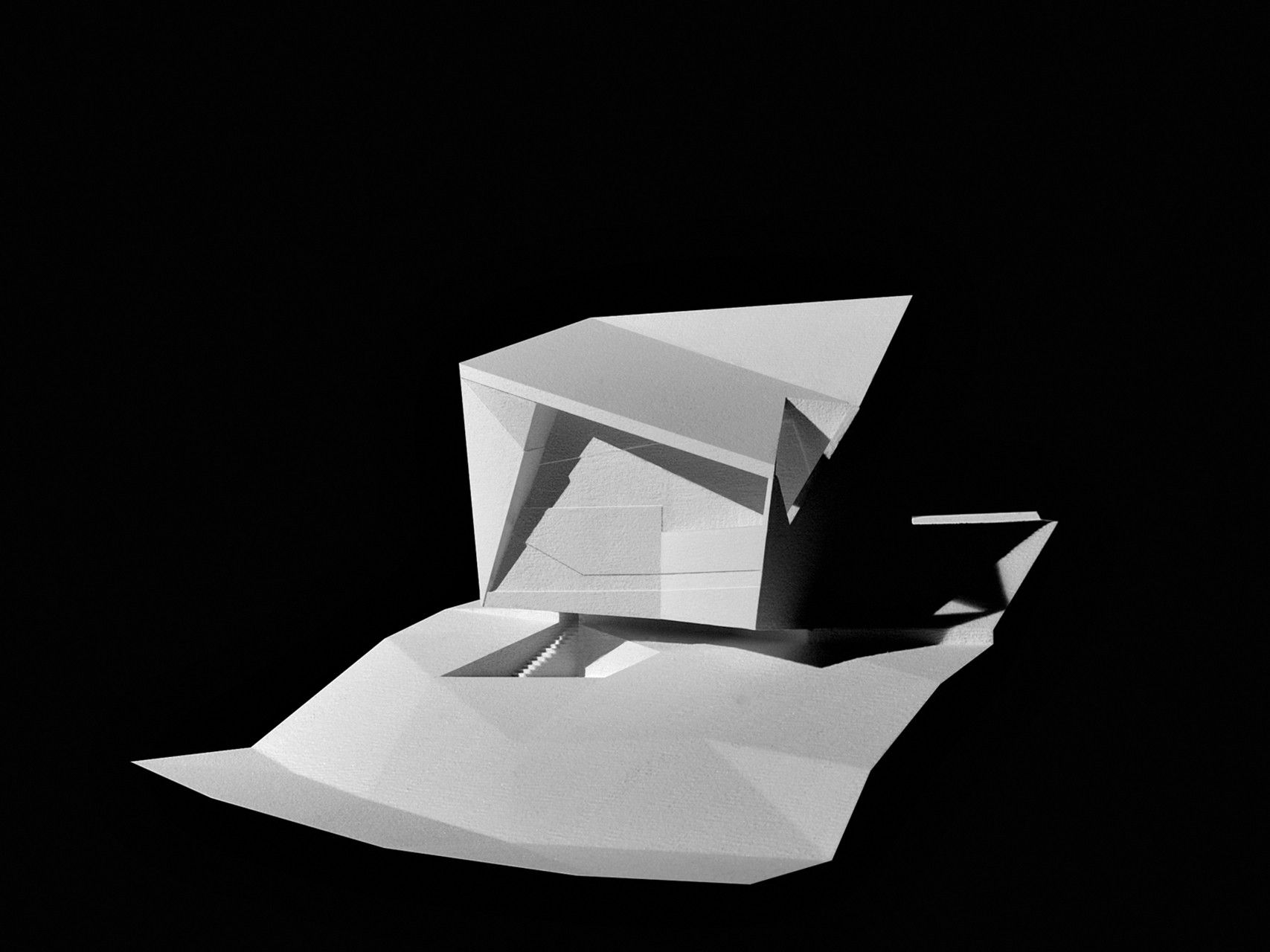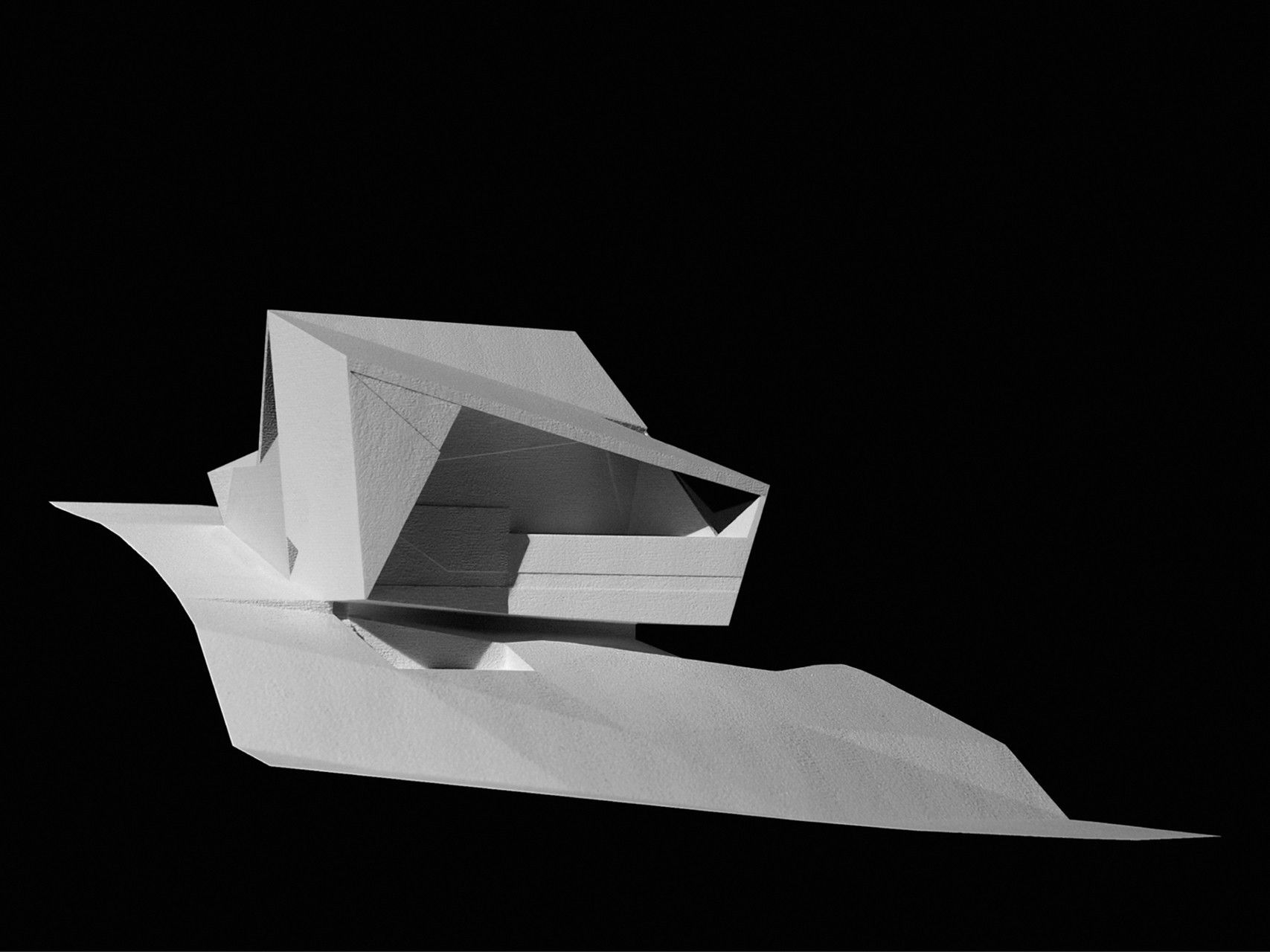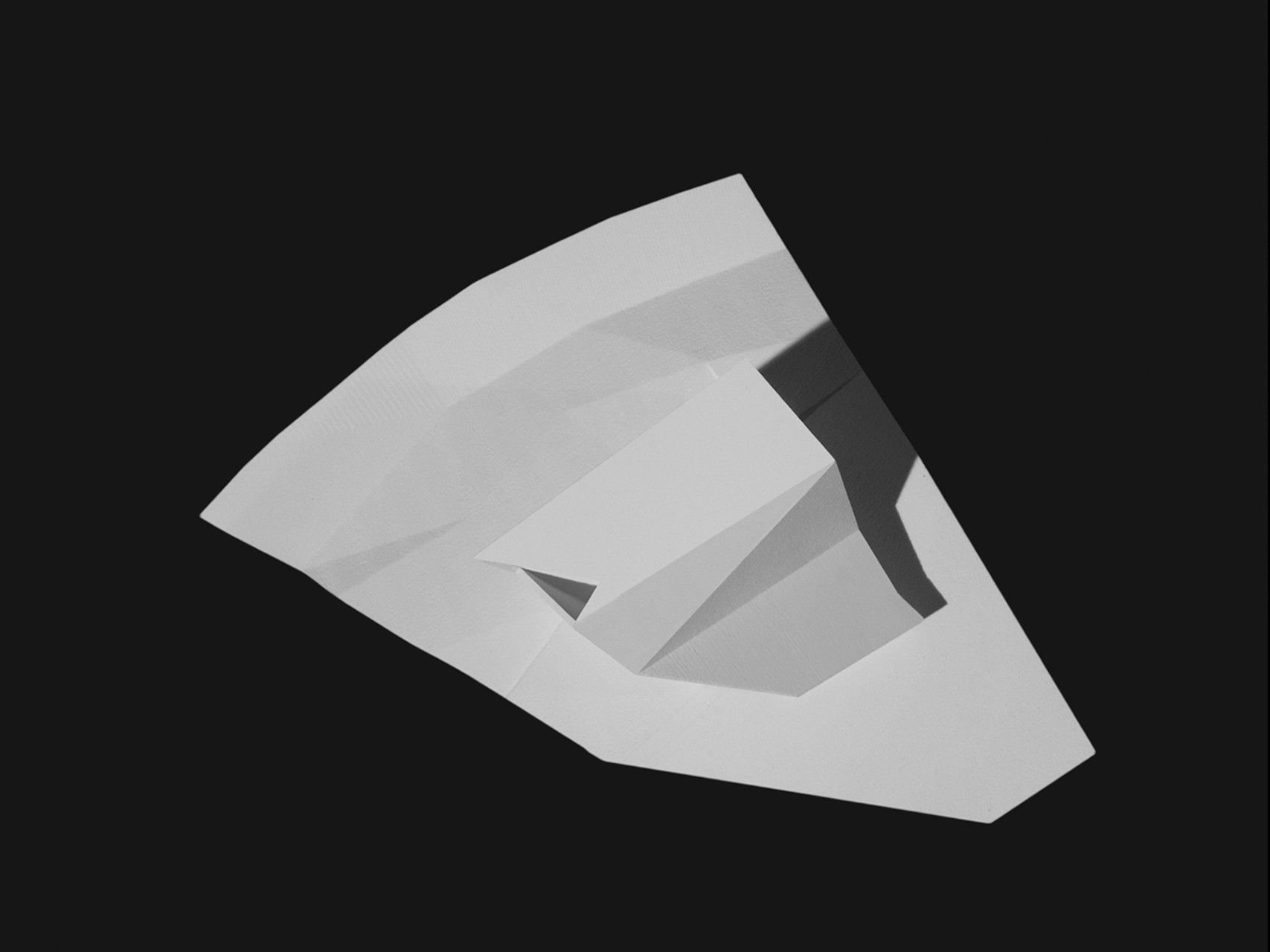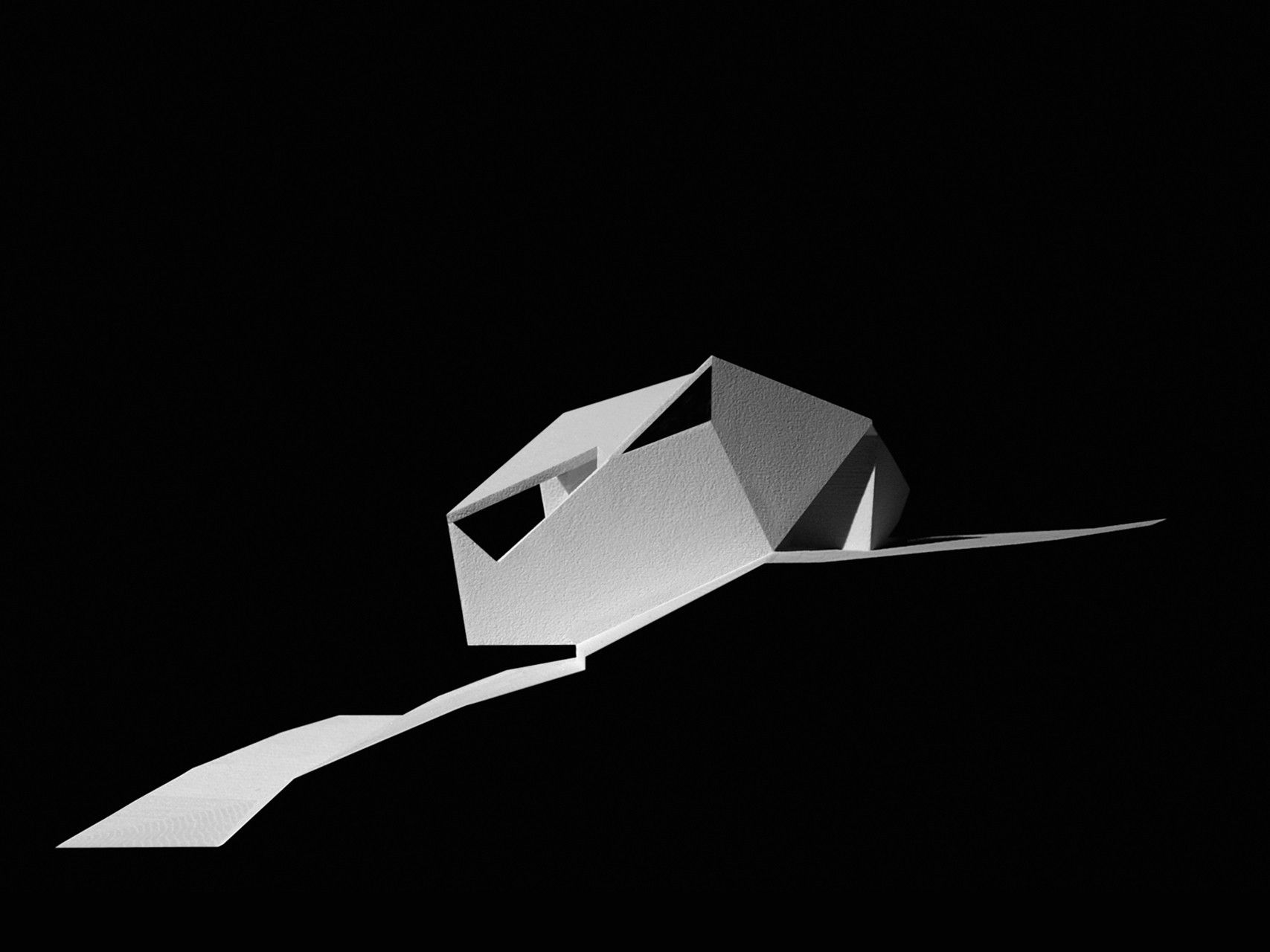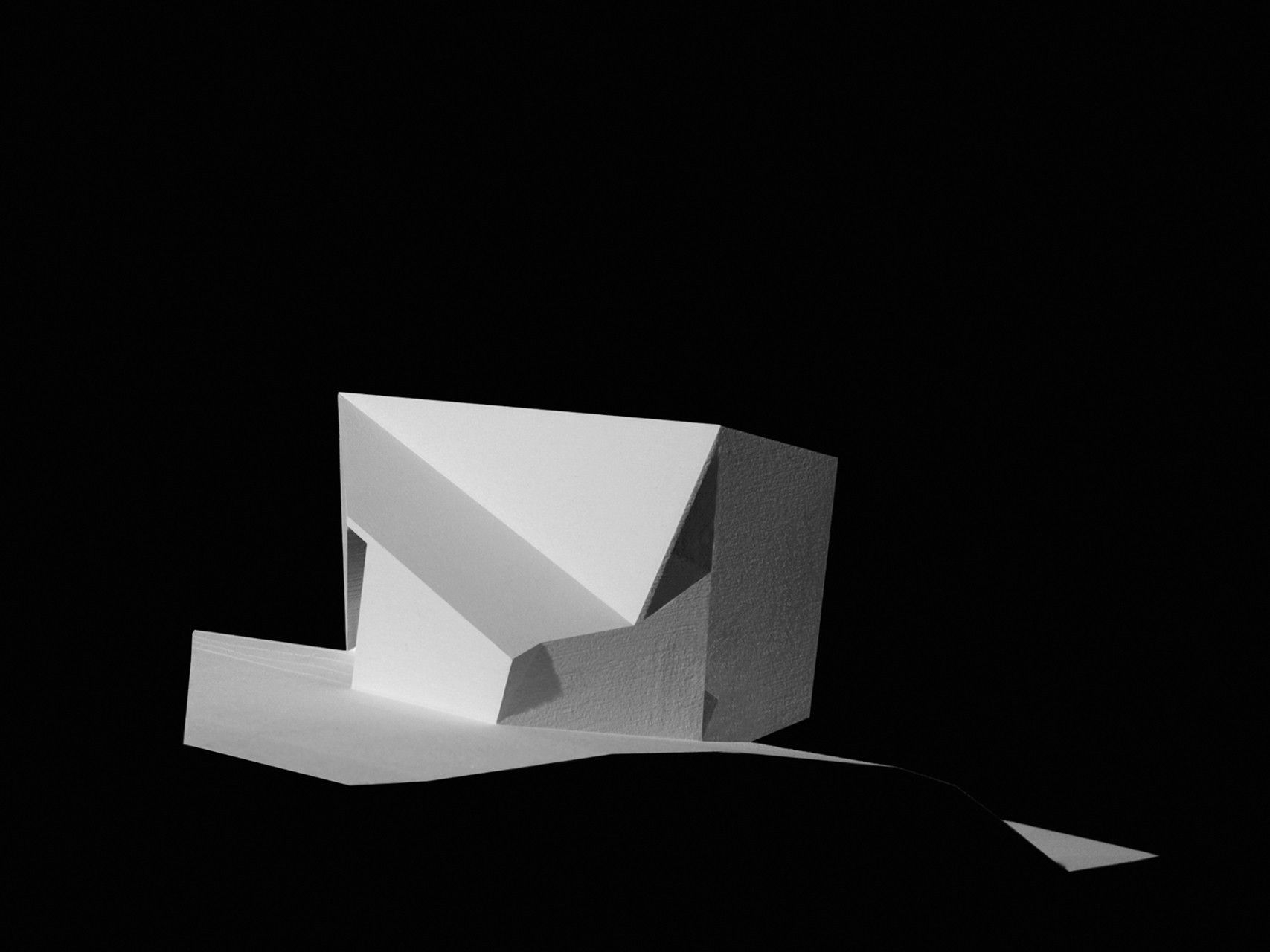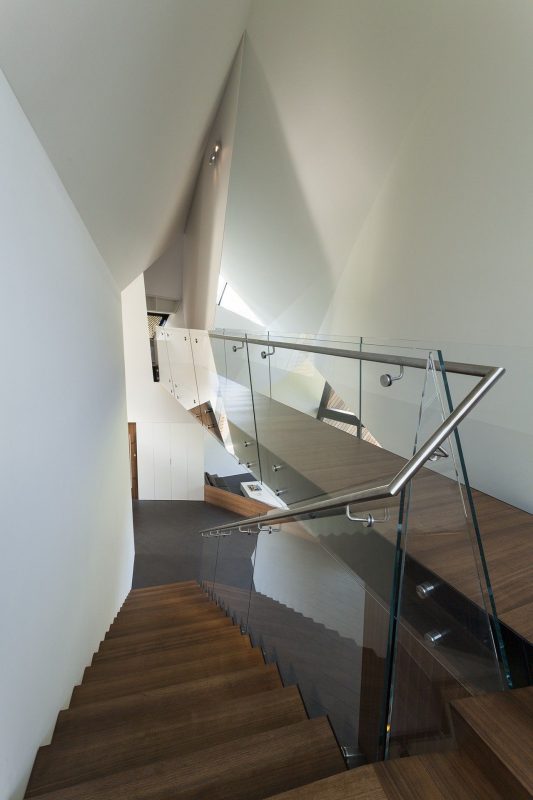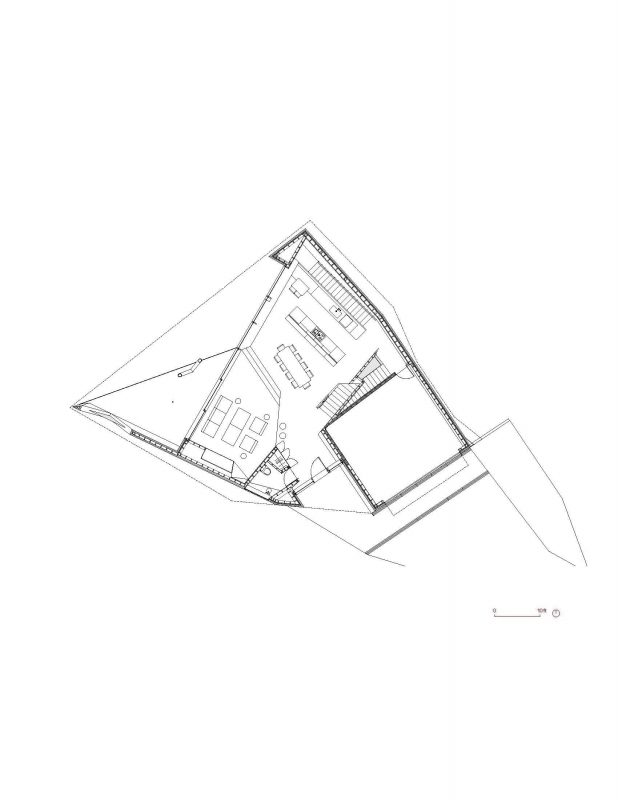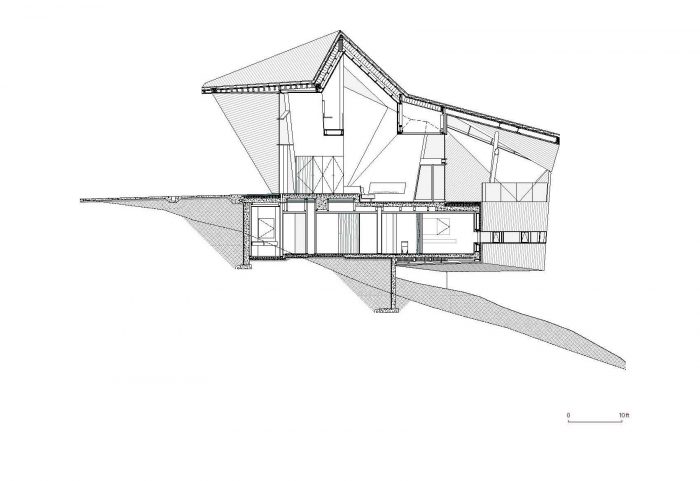Unlike traditional mountain houses, the Hadaway house is one snow refuge that is literally formed by the logical and functional requirements of the design. The final result of the strict design process has led to an artifact that was aptly awarded the Canadian Architect Award of Excellence, 2008.
Two main factors have influenced the house’s design. The first is the allowable building footprint and height, as the architects were eager to accomplish a successful merge with the surrounding nature. The second is the need to keep the snow off its roof, which led to tilting the roof in a certain angle that would allow for the snow to fall into specifically designed storage spaces within the house.
The house has a narrow entrance and a garage on the street .The internal spaces fit right in as well; spacious, open, and seamlessly connected to the outside. However, the house is naturally ventilated and warmed in summers and winters by drawing air from the lowest level on the north side of the house to vent at the top of the central rift.
The materials used in the exterior finishing are inspired by the surrounding nature. Both glass and wood are symbols of the blending of the house with the woods around it. Construction is a hybrid of monolithic and framed systems. The slabs and walls which enclose the lower floor are concrete, while the uppermost levels are a composite steel and heavy timber structure with wood-frame infill, the architects explain.
Patkau Architects has been active for 45 years. They describe their approach saying : We refuse singular definitions of architecture: as art, as technology, as social service, as environmental agent, as political statement. We embrace all these definitions, together, as part of the rich, complex and vital discipline that we believe architecture to be.
Additionally, they are promoters of post-modernist functionalism. The Hadaway House is no exception. Both the external form and the internal spaces are results of functional elements, yet the aesthetics of space are vivid and evident.
By: Hazem Raad
